Medline’s new boss has new bosses
The rst CEO from outside the Mills family will answer to a board dominated by PE rms
By Katherine Davis
Newly appointed Medline Industries CEO Jim Boyle is tasked with leading the medical products manufacturer and distributor through its next phase of growth while also paying down a massive debt load left by a leveraged buyout two years ago. Boyle, who was named chief executive in late June after a 27year tenure at Medline, o cially
Renaissance of the Chicago steakhouse
begins his new gig Oct. 1. He is the privately held company’s rst leader not related to the founding Mills family, which launched North eld-based Medline in 1966.
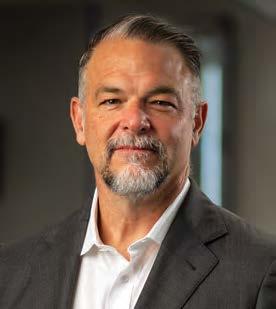
“Five years ago, the Mills family was very intentional about establishing the succession process,” Boyle, 52, says during a recent interview at Medline’s headquarters. “We’ve been working on this for a while. is
Jim Boyle
is a legacy I plan to continue.”
But the Mills family no longer calls all the shots at Medline. Boyle reports to a board of directors dominated by private-equity rms that acquired control of

See MEDLINE on Page 22
 By Ally Marotti
By Ally Marotti
Chicago’s steakhouse scene is entering a new era. roughout the city, at least half a dozen steakhouses have recently opened or soon will. ey are not your traditional Chicago-style steakhouse, with white tablecloths, big cuts of meat and buttery sides. ey are niche, modern and have crafted their menus not around exces-
sive beef consumption, but around moderation. e new school of thought: Instead of wowing the consumer with the size of the steak, impress them with the preparation.
ere is Smoque Steak, which smokes its steaks before cooking them sous vide and searing them to order. ere is Asador Bastian, a Basque steakhouse that works
See STEAKHOUSE on Page 23
DAN MCGRATH
Through triumph and setbacks, the smart and witty Rocky Wirtz did well by this town.

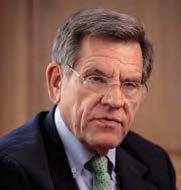
PAGE 2
REAL ESTATE

The Old Post Of ce’s owner looks to defy a brutal market with a new project. PAGE 3

C HICAGOBUSINESS.COM I JULY 31, 2023 VOL. 46, NO. 30 l COPYRIGHT 2023 CRAIN COMMUNICATIONS INC. l ALL RIGHTS RESERVED A REMOTE POSSIBILITY
a remote and hybrid workforce can and should change workplaces, neighborhoods and the city I PAGE 11
How
FORUM
JOHN R. BOEHM
New ones are popping up around the city, but they aren’t the traditional white-tablecloth spots
Good intentions aren’t enough to shape smart tax policy
The testimony was powerful enough to make the Grinch wince: A South Side man who spent seven years on the streets, his companions lice and bed bugs. A pediatrician who knows rsthand how homelessness particularly harms kids. A North Side woman who says she’s grown tired in 30 years of waiting for what is still a rich city to do something.
But there also was the business o cial who talked about the 22% vacancy rate in downtown o ce buildings, o ces that used to be lled with well-paid commuters but increasingly are running into insolvency. Or the woman from Rogers Park who urged the city to go slow, because she feared her rent was
going to rise and her relatives across town in Bronzeville could lose a big chunk of their hard-earned nest egg to the tax man.
So it went as a City Council committee held a subject-matter hearing on the proposed Bring Chicago Home ordinance, a well-intended proposal aimed at a real problem, but one that could spark its own unintended consequences unless o cials take care.
How this matter gets resolved is a real test of the governing chops of Mayor Brandon Johnson. He strongly backed the proposal during his campaign, asserting that raising taxes on some well-o people is the correct and progressive way to promote a ordable housing. But now that he is mayor, Johnson also is going to have to weigh the impact of potential overtaxation and cobble together a compromise that is both meaning-
ful and has the votes to pass.
A few facts: According to the city, on an average night, 4,139 Chicagoans are homeless — and that’s not counting refugees. Over the course of a year, 65,611 will spend at least one night on the street or sacked out on a welcoming friend’s couch, about 11,000 of them of school age. Ordinance advocates have seized on the larger number, arguing that it’s big enough that the homeless actually could constitute Chicago’s 51st Ward.
e proposed solution would more than triple the city’s realestate transfer tax on property sales of $1 million or more, moving it from the current 0.75% of the sales price to 2.65%. And despite its earlier billing as a “mansion tax,” the measure would apply not only to residences but any kind of property.
As my colleague Dennis Rodkin computed in a recent story, had the
tax been in e ect on the recent $415 million sale of a Wacker Drive o ce tower, the tax would have been $10.99 million instead of today’s $3.1 million. at’s real money. But then so is the estimated $163 million a year the tax would yield for a ordable housing and homelessness prevention.

ough business people like any other group exaggerate the downside of tax hikes, you don’t have to be a genius to conclude that jacking up taxes at a time when the Loop is reeling is counterproductive. I mean, Johnson is talking about spending tens of millions of dollars to convert old LaSalle Street o ce buildings to residential use. Raising the transfer tax so much at one time could undo the progress the city wants on LaSalle.
I’m more concerned, though, about little people. Much of the city’s a ordable housing stock is in


two-, three- and six- ats, many of them owned by aging people for whom those properties represent their retirement account. An increasing number of those buildings are worth $1 million or more. Taxing Uncle Joe 20 or 25 grand o the top is either going to reduce the nest egg or force up rents, the exact opposite of what advocates say they want.
Team Johnson has signaled it no longer will seek to enact its plan in Spring eld but instead pass it through the City Council and then a voter referendum. It’s also signaling it’s open to change. at’s good, because the $1 million level is too low (it’s $5 million in Los Angeles) and the rate is a lot higher than in competing suburbs where middle-class Chicagoans could move if need be, such as Evanston (0.5% to 0.9%) Oak Park (0.8%) and Skokie (0.3%). I look forward to seeing what the mayor comes up with.
Through triumph and setbacks, Rocky Wirtz did well by this town
Iwasn’t long into the job running sports at the Chicago Tribune when I took a call from William Wirtz’s assistant. Her boss, the autocratic baron of a liquor/ hockey/real estate empire, found it unfortunate that he hardly knew anyone in Chicago media circles these days, she told me.
In other words, a get-acquainted session might stanch the ow of bad publicity that had been washing over Wirtz’s futile Blackhawks operation for years. e call led to a lunch meeting at the United Center. I brought along the Trib’s editor, managing editor and some sports department colleagues.
Hawks VP Bob Pulford and Wirtz’s sons Peter and Rocky joined us in a well-appointed o ce/conference room about the size of a hockey rink. Before lunch Wirtz pulled open a canopy, revealing an astonishingly well-stocked bar, all top-shelf stu , and an obvious intention to start knocking ’em back and telling stories.
With my bosses ordering an iced tea and a Diet Coke, we wouldn’t be doing any meaningful knocking, which was just as well — I was due back at work, and I suspect Mr. Wirtz would have drunk me under the table if I’d tried keeping up with him.
But our abstinence didn’t deter him. e stories got better as the drinks owed, including one that had the Hawks agreeing to help out with a charity event, but only if tickets were priced at $50 rather than $25.
“I don’t do anything for 25
bucks,” Wirtz declared.
“And you wonder why they call you ‘Dollar Bill,’” his son Rocky Wirtz retorted.
at was pretty much the tone of an engaging afternoon, Rocky Wirtz bantering with his cantankerous father, clearly enjoying himself, the only one in the room not intimidated by the old man’s bluster.
is, I thought, is a pretty cool customer — smart, witty, sure of himself. But I didn’t foresee dealing with him much — Rocky busied himself with the liquor business, while Peter was the presumed heir apparent to the hockey team.
Fast forward to 2007, and didn’t the Wirtz family throw us all a curve when Dollar Bill died. Under terms of a little-known succession plan, Rocky got pretty much everything, including the Blackhawks, whom he set about transforming with a single-minded zeal he o set with natural a ability and an easy demeanor.
Pulford’s view of hockey was rooted in the Ice Age, but he retained the old man’s ear in each of his 18 incarnations with the Hawks. Rocky launched Pulford before Dollar Bill was in the ground.
Twice Rocky came to see us at the Trib, ostensibly seeking advice on how to improve the team’s dismal media relations. Rocky knew what he was doing and didn’t really need us, though I genuinely liked the guy and always enjoyed speaking with him.
He blew up a policy his father had long championed and put the Blackhawks on home TV, reconnecting with a fan base that had dwindled into irrelevance. He brought back franchise icons Bobby Hull, Stan Mikita and Tony Esposito as symbols of better times. He snatched John McDonough and Jay Blunk away from the Cubs, where they’d mastered the art of lling
seats with an often inferior product. But his Hawks weren’t inferior for long. e nucleus Dale Tallon assembled and Stan Bowman re ned produced three Stanley Cup championships in ve years, or as many titles as the city’s other pro teams have combined to win in this century. A 13-year string of sellouts at the United Center established Rocky as that rarest of Chicago sports commodities: a team owner who is admired and respected by the fans, if not beloved.
en Brad Aldrich’s depravity took a blowtorch to the entire
organization, setting it back years. Again Rocky did what he had to do and removed everyone who was complicit in the coverup, including some of his most trusted lieutenants. He was devastated . . . and uncharacteristically angry.

e opportunity to land Connor Bedard with the rst pick in this year’s draft had him game for another rebuild and smiling for the rst time in many months. But he won’t get to see it, and that’s just sad. Rocky Wirtz died on July 25, after a brief illness.
Remove hockey and the other business achievements from his
résumé and consider his other contributions: e commerce and jobs he brought to the forlorn neighborhood around the United Center. His commitment to causes promoting health, education and more stable families. His support for youth hockey.
A good man, gone too soon at age 70. Rocky Wirtz did well by his city. Even his old man would be proud.
Crain’s contributing columnist Dan McGrath is president of Leo High School in Chicago and a former Chicago Tribune sports editor.
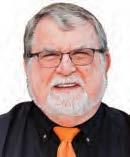

WINTRUST COMMUNITY BANKS RANKED #1 IN CUSTOMER SATISFACTION FOR PERSONAL BANKING IN ILLINOIS 2 YEARS IN A ROW!


See why we’re also ranked #1 in Convenience, People, Value, and Trust by J.D. Power.

2 | CRAIN’S CHICAGO BUSINESS | JULY 31, 2023
For J.D. Power 2023 award information, visit jdpower.com/awards.
GREG HINZ ON
POLITICS
Greg Hinz
DAN MCGRATH ON THE BUSINESS OF SPORTS
Dan McGrath
Ken Grif n’s condo selloff in Chicago not going well
As the Citadel founder decamped for Miami, he put ve local condos of $10 million-plus up for sale. They haven’t moved as fast as some expected. I
 By Dennis Rodkin
By Dennis Rodkin
Ayear ago last week, Ken Gri n put a portfolio of four upper-end Gold Coast condos on the market, each priced at more than $10 million, as he shifted his business and family from Chicago to Florida. Grifn later added a fth condo to the o erings.
It hasn’t gone well.
e asking prices for the ve condos, in three high-rises all within a few blocks of one another, add up to nearly $63.18 million. So far, Gri n, head of the Citadel nancial empire, has sold two, for a total of about $21.43 million.


ere’s still at least $42 million worth of Gri n’s condo inventory left to sell, and that’s only for the units he has put up for sale. Gri n has at least two
Old Post Of ce owner looks to defy market
601W makes a bold investment in a building yet to prove itself as an of ce destination
tively call for more than $300 million in taxpayer subsidies.
e city of Chicago may be trying to help developers get rid of downtown o ce space. But 601W is about to bring a lot more to the market.
e New York-based real estate developer is ramping up marketing for Canal Station, a refurbished o ce building at 801 S. Canal St. with 683,000 square feet of workspace that it aims to have mostly ready for tenants to move into by the end of the year.
e $265 million project is breathing new life into a six-story property stretching almost a full city block along Canal Street between Polk and Taylor streets; it was fully leased to Northern Trust from 1990 until the bank’s lease expired in late 2020.
It’s a bold investment by 601W that appears to y in the face of the prevailing o ce market trends. Downtown o ce vacancy has hit new record highs in nine of the past 11 quarters, driven by a barrage of companies scrapping big chunks of their workspace as they embrace the rise of remote work. at downsizing movement — combined with a big jump in interest rates over the past year — has devastated property values, creating a historic wave of distress that is nancially crushing landlords across the central business district.
Supply and demand are so out of balance that city planning ocials are working with developers on proposals to turn ve large ofce buildings on and near LaSalle Street into residential properties, projects that collec-

at’s the ugly backdrop for 601W and its local leasing partner, Telos Group, as they hunt for tenants to ll a building that has never proven itself as a destination for o ce users.
601W and Telos see a much rosier picture. Canal Station is poised to piggyback o the leasing success of the Old Post O ce, just one large block north and nearly full. e addition of nearby BMO Tower and its recent streak of tenant wins also has helped validate the corporate appeal of the southwest corner of the Loop, an area Telos now calls the “Post O ce District” to build cachet.
One centerpiece of Canal Station’s marketing: It’s meant to be a bargain. Telos projects annual rents in the building will be close to $45 per square foot, including taxes and operating expenses that tenants typically pay. at’s in line with what companies pay for competitive second-tier, or Class B, buildings downtown. Canal Station, meanwhile, will
See 601W on Page 23
Treatment Not Trauma advocates make case to council
The ordinance aims to expand mental health infrastructure by reopening clinics and implementing a non-police emergency response program

Chicago City Council members and public health o cials last week laid out components of a citywide mental health plan that Mayor Brandon Johnson campaigned on — but full details don’t yet exist on how much it would cost or how many workers it would require.
Johnson’s plan is based on the Treatment Not Trauma ordinance, which was originally proposed by Ald. Rossana Rodríguez-
Sánchez, 33rd, in 2020 and calls for reopening 14 mental health clinics and expanding the use of non-police emergency response to crisis events.
Johnson, who was not present at the July 24 hearing, promised voters he would implement Treatment Not Trauma as a way to overhaul and expand city-run mental health programs. Enthusiasm for the ordinance from organizers and residents followed police killings of people with mental illness and the COVID-19 pan-
demic, which exacerbated mental illness for many Americans.
“ e purpose of this hearing today was to open the space to talk about why Treatment Not Trauma is necessary,” said Rodríguez-Sánchez, a Johnson ally who now chairs the Committee on Health & Human Relations. “It was also a moment for people who have been working on this for over a decade to have an opportunity to share the knowledge
See HEALTH on Page 20
JULY 31, 2023 | CRAIN’S CHICAGO BUSINESS | 3
The condos Grif n has on the market or has recently sold are in (from left) No. 9 Walton, the Waldorf Astoria and the Park Tower.
GETTY IMAGES
Katherine Davis
Ken Grif n
See GRIFFIN on Page 22
BLOOMBERG
Danny Ecker
Canal Station is poised to piggyback off the leasing success of the Old Post Of ce, just one large block north and nearly full.
Fulton Market landlord sues developer
 Danny Ecker
Danny Ecker
A property near the heart of the Fulton Market District is back on the market after an upstart developer’s plan to buy it and build a $170 million, 17-story o ce building on the site fell through, according to a recent lawsuit over the scuttled deal.
A venture that owns the property at 415-417 North Sangamon Street alleged in a lawsuit earlier this month that an entity led by Chicago commercial leasing broker Joy Jordan defaulted on a purchase agreement for the site by failing to complete the deal after multiple extensions of the closing date. Jordan, a former Telos Group and Sterling Bay leasing agent, launched her own development venture in 2021 and put the Sangamon building under contract last year, ultimately winning City Council approval in March for the 277,000-square-foot project.
e seller, an entity led by Chicago investor Grey Bemis-Kelley, said in the complaint that her venture agreed in March 2022 to sell her property to Jordan’s development rm, Fortem Voluntas, for $13 million. at deal was amended three
the purchase last month, according to the Cook County Circuit Court complaint, which seeks the release of $500,000 in earnest money, plus interest.
e dispute appears to kill a project that would have added another chunk of available o ce space to Fulton Market, the trendy former meatpacking corridor that has been a magnet for companies while many o ce buildings elsewhere in the city struggle with the rise of remote work.
from local high-net-worth real estate investors and aimed to develop the building on speculation, or without any tenants signed in advance.
But landing nancing for any major new commercial development over the past year has been di cult, let alone an o ce building at a time when many companies are cutting back on workspace. Higher interest rates have driven up borrowing costs and banks have tightened up lending amid economic uncertainty.

“Any time you start a company, especially in a heavily-male business, you have to have strong will behind it,” Jordan said in an April 2022 interview with Crain’s.
“A lot of women are just too scared and don’t feel like they have the support from capital (investors). It’s a very male, buddy-buddy business (where) the capital knows the capital and women are just not part of that community,” she said at the time.
and Kinzie streets and includes a 43,378-square-foot building with an adjacent vacant lot. e property was rezoned earlier this year with a DX-7 designation to allow the larger o ce development, though a new buyer would likely need to win City Council approval for a di erent planned development.
times to push back the closing date as Jordan sought City Council zoning approval for her project, ultimately delaying the date to June 14 and reducing the sale price to $12.2 million, the lawsuit said. Bemis-Kelley’s venture formally terminated the deal after Jordan failed to deposit the money to complete
Cushman & Wakeeld brokers Michael Marks and Evan Halkias are now marketing the Sangamon property for sale to other investors.
e lawsuit also casts a harsh spotlight on Jordan, who built her name as an o ce leasing broker before trying her hand at development with Fortem Voluntas. Jordan said last year she had raised some equity for the Sangamon project
It’s unclear whether those issues factored into the busted Sangamon property sale. Jordan did not respond to a request for comment, and Bemis-Kelley declined to comment.
Jordan told Crain’s last year that she named her development rm Fortem Voluntas — a Latin phrase meaning “strong will” — as a signal of her intention to stand out in a local development scene whose major players are mostly led by men.
Jordan had teamed with Chicago real estate veteran Howard Blair as a development consultant to oversee construction aspects of the Sangamon project. Blair, who has had a hand in construction of some of the most prominent new o ce buildings in the city over the past three decades, called Jordan a “real force” in an interview last spring about the Fulton Market project and was also an investor in the planned development.
Bemis-Kelley’s property sits at the northeast corner of Sangamon
e Real Deal Chicago rst reported news of the lawsuit against Jordan’s venture. Jordan spent more than seven years at Chicago-based leasing brokerage Telos, where she helped lure companies to Willis Tower as Blackstone Group began a massive renovation of the skyscraper. She joined Sterling Bay in 2019, where she helped lead leasing e orts at the Lincoln Yards megaproject along the North Branch of the Chicago River before parting ways with the developer in 2021.
Jordan was named to Crain’s 40 Under 40 list in 2019 and was previously named to Crain’s 20 in eir 20s list in 2015.
Northern Trust cutting 900 jobs to tame cost growth

ere have been no public pronouncements — no cost-cutting program nicknames like 2017’s “Value for Spend” — but Northern Trust so far this year is eliminating more jobs than it has in any single year in recent memory.
Chicago’s largest locally headquartered bank is in the middle of cutting 900 jobs, about 4% of its global workforce as of the end of 2022.
e cutbacks come as Northern CEO Michael O’Grady scrambles to show Wall Street the company is serious about bringing expense growth at least in line with revenue growth. Over the past 18 months, costs easily have outpaced revenue, in no small part due to substantially higher paydays for workers.
“Rationalizing our cost base remains a top priority, and the governance and control mechanisms we’re putting in place today should drive sustainable improvements for both the near term and for years to
come,” O’Grady told analysts July 19 on Northern’s second-quarter earnings call.
Northern laid o about 500 workers in 2021, its most recent signicant cost-cutting campaign. Last year, though, the bank hired aggressively, pushing its global headcount to 23,600 from 21,100 at the end of 2021, according to Securities & Exchange Commission lings.
e layo s this year “address roles in all areas of the company and all locations,” a Northern spokesman said in an email. He declined to reveal how many are occurring in Chicago but did say, “ e Chicago
employee base remains more than 6,500.”
“ at said,” he added, “we continue to selectively add sta . We’re prioritizing projects and bringing in resources where necessary to minimize risk and accelerate new business growth.”
Northern recorded severance costs of nearly $39 million in the second quarter. In the fourth quarter of 2022, the bank posted $32 million in severance expenses tied to 300 layo s announced in January. In the second quarter, Northern identi ed another 600 jobs to be cut, Chief Financial O cer Jason
Tyler told analysts on the call.
Between the two cutback waves, the bank expects to save $40 million to $56 million annually once they’re completed, according to information Tyler gave analysts.
Northern has navigated the volatile banking environment reasonably well this year. It’s remained liquid even as it’s seen its formerly low-cost deposits migrate to higher-paying certi cates of deposit and money-market accounts. e company also has repurchased nearly $200 million of its own shares in the rst half of the year, compared with just $35 million all of last year.
Even so, rst-half revenue grew just 1% over the same period last year, to $3.53 billion. During the same period, costs rose 8% to $2.62 billion. Excluding the severance charge and a $32 million charge related to the elimination of a product o ering, expenses increased 5% year over year. Investors took some comfort in the progress Northern made in the second quarter. e stock was up
11.7% as of July 28th’s close compared with July 18, just before earnings were released. But shares still are down 9.5% for the year.
By comparison to Northern’s arch-rivals, Boston-based State Street’s stock is down 8.3% for the year and New York-based Bank of New York Mellon’s is down 1.2%. ose two others in the past have been quicker and more aggressive in eliminating jobs when revenues are pressured.
In the rst half of this year, though, State Street and BNY Mellon’s sta -related costs are up 6% and 5.5%, respectively, over the same time frame last year, according to SEC lings. Northern’s are 4.5% higher after excluding the severance charge.
e question now is whether Northern employees not a ected by the layo s can breathe more easily for the remainder of the year. Northern’s spokesman didn’t respond to a question on whether these were likely to be the last signi cant layo s of the year.
4 | CRAIN’S CHICAGO BUSINESS | JULY 31, 2023
A rendering of the ground oor of Fortem Voluntas’ planned of ce building at 415 N. Sangamon St. | RENDERINGS BY ECKENHOFF SAUNDERS ARCHITECTS
A rendering of Fortem Voluntas’ planned of ce project.
The dispute appears to kill a project that would have added a chunk of available of ce space to the neighborhood.
Steve Daniels
JULIE KERTESZ/FLICKR


TUESDAY, SEPTEMBER 26 7:30–9:45 a.m.
Chicago Club REGISTER HERE Oscar Munoz FORMER CEO AND EXECUTIVE CHAIRMAN United Airlines ChicagoBusiness.com/SeptPB PRESENTING SPONSOR
The
DNC organizers sign labor peace deal
The agreement ensures that union workers will not strike during the convention at the United Center and McCormick Place
One year before the Democratic National Convention takes place in Chicago, organizers signed a labor peace deal with nearly a dozen city unions, a move they hope will signal friendly relations between the party and its working-class wing.

e labor peace agreement ensures that union workers will not strike during the DNC at the United Center and McCormick Place.
“It sets out the framework for dealing with working conditions and any disputes that we have,” said Chicago Federation of Labor President Bob Reiter, who noted that speci c working conditions under the agreement will need to be addressed later.
Led by Reiter, the DNC committee’s agreement includes the International Alliance of eatrical Stage Employees, International Brotherhood of Electrical Workers Local 134, International Union of Operating Engineers Local 399, Mid-America Carpenters Regional Council, Service Employees International Union Local 1, Teamsters Local 727, Unite-Here Local 1, Riggers Local Union 136 and United Steelworkers Local 17U Decorators Union.
“ is is historic,” Democratic National Committee Chair Jaime Harrison said during a press conference July 25 at McCormick Place. “(It’s) the fastest that we’ve ever done this type of
agreement with the DNC.”
Democrats and union representatives touted how early Chicago had inked the agreement, comparing their timeline with the 2016 convention in Philadelphia. Labor peace wasn’t inevitable in the union-friendly town in Pennsylvania; in 2014, a spat between the Pennsylvania Convention Center and the local carpenters union put Philadelphia’s front-runner status as host in doubt. Labor smoothed over those rifts in time for the
convention, and a little over a month before the event, the Democratic National Committee signed a project labor agreement with local unions. e agreement required that the committee use union labor and, in exchange, workers would promise not to strike. Even with that rocky start, the 2016 convention set a more optimistic tone with labor than the 2012 DNC in North Carolina, a rightto-work state.
By contrast, this year’s orga-
nizers want to show that all is at peace in Chicago. While union membership across the U.S. continues to decline — the percentage of workers who belong to a union fell from 10.3% in 2021 to 10.1% in 2022 — the labor movement has seen a resurgence in recent years. But that progressive push hasn’t always bene ted the White House’s relationship with unions. Last year’s rail strike threw cold water on President Joe Biden’s self-imposed moniker as “the
most pro-union president in history.” With the backdrop of two ongoing Hollywood strikes and a narrowly averted UPS work stoppage, the Democratic National Committee is trying to bring labor back into the fold.
Mayor Brandon Johnson, a former Chicago Teachers Union organizer, boosted those optics.
“My union card is still alive and well,” Johnson said at the July 25 press conference. e mayor added that the agreement would provide good jobs for communities across the city, making a point to single out communities like Gar eld Park and Humboldt Park. But when pressed on what language within the agreement would ensure that residents of Chicago’s South and West sides would get a slice of the convention, Johnson did not dive into details.
“As with any agreement, its effectiveness is based on its execution,” Johnson said. e labor peace agreement itself doesn’t control the makeup of the DNC workforce, according to Reiter.
“In terms of the economic development with the West and the South side(s) that ows out of that, that’s going to be more a function of the agreements that the DNC has in place with other vendors and how all that gets wrapped up into it,” Reiter said. “ is is an umbrella agreement that covers a lot of di erent unions who have their own processes.”
Zebra Technologies cutting jobs via layoffs, buyouts
Zebra Technologies is cutting 2% to 3% of its jobs through layo s and buyouts as it looks to trim costs in the face of post-pandemic headwinds in key markets such as e-commerce and logistics.
Keith Housum, an analyst at Northcoast Research in Cleveland, says in a research note that Zebra began trimming 200 to 300 jobs in the second quarter through layo s and buyout o ers to employees 55 and older at the maker of barcode readers and printers.
“Zebra has a track record of judiciously managing our operating expenses and investments with a long-term view,” the company said in a statement. “Our disciplined approach has enabled our long history of success, preparing us to succeed in challenging times.
“While we are facing a di cult and uncertain business environment, we believe these actions are needed to reprioritize and invest in parts of our business that will strengthen our business for the long run.”
e Lincolnshire-based company is among a growing list of Chicago-area businesses that have conducted layo s in response to post-pandemic slowdowns in some industries.
CDW, a provider of computer products and services that is also based in Lincolnshire, also saw layo s in the second quarter. e technology sector has been particularly hard hit, with a number of startups cutting back as funding and sales become harder to nd.
Revenue pressure
Zebra makes handheld computers, or devices with smartphone and barcode-reading capabilities, as well as printers, that retailers, trucking companies and warehouses use. Revenue fell 2% in the rst quarter from a year earlier and likely fell further in the second quarter, according to analysts’ forecasts.

e company reports secondquarter earnings Aug. 1. Zebra shares fell 6% from July 19 through July 27th’s close, while the S&P 500 fell 1% during the same period.
Zebra’s performance soared during the COVID-19 pandemic, which led to a surge in e-commerce sales and massive supply-chain disruptions that focused attention on its products, causing its stock to more than triple to nearly $600 per share in December 2021.
But demand is slowing, with Housum expecting a 5% decline in second-quarter revenue from handheld computers and barcode readers. He says Zebra has gained market share from competitors, such as Honeywell, but it
also has new competition from smartphone maker Samsung.
Technology push
Zebra also has made a push into so-called machine vision, or high-speed cameras and software that are deployed at manufacturing and distribution centers to spot defects and track products.
“Our analysis suggests that Zebra’s endeavors in the xed industrial scanning and robotics sectors have fallen short of management’s expectations in the
short-term,” Housum wrote in a note to clients. “. . . We expect management to double down and increase its investments in these products in response.”
Bill Burns helped build the industrial-scanning and robotics businesses through acquisitions before taking over as CEO of the company earlier this year.
Housum estimates Zebra’s second-quarter revenue will be down about 10%, with a full-year decline of nearly 5%. But he’s expecting a rebound next year, with 8% revenue growth.
6 | CRAIN’S CHICAGO BUSINESS | JULY 31, 2023
Leigh Giangreco
John Pletz
The Democratic National Convention is planned for August 2024 at the United Center (above) and McCormick Place.
ZEBRA
GETTY IMAGES
Zurich aims to unload almost half of its HQ
Danny Ecker
Zurich North America is trying to unload almost half its Schaumburg headquarters on the sublease market, a mammoth addition of available o ce space to a suburban landscape already awash in vacancy.

e insurance giant has hired Jones Lang LaSalle to nd new users for up to 362,974 square feet at 1299 Zurich Way in the northwest suburb, according to a yer. e o ering in the glassy, 11-story building along Interstate 90 represents roughly 46% of the building’s rentable o ce space. It is also the largest block of o ces formally being marketed for sublease in the Chicago suburbs, according to JLL data.
When Zurich moved across town into its new U.S. headquarters, then-Chicago Tribune architecture critic Blair Kamin wrote that the structure “makes you think that a giant child was playing a giant game of blocks and went o to grab a giant glass of milk while leaving the blocks slightly askew.” It quickly became one of the most eye-catching buildings along the I-90 corridor.
Zurich leases the entire building, which is around 783,000 square feet.

e listing now is one of the most dramatic cases yet in the Chicago area of remote work’s assault on o ce demand. Zurich joins a crowd of companies aiming to shed unwanted workspace; such moves have driven up o ce vacancy to an all-time high.
e company decided to sublease a big chunk of its headquarters “after a thorough real estate assessment that realized signicant, positive operational andnancial bene ts for our business, while also continuing to provide a working environment that accommodates di erent employee working styles, as well as encourages collaboration, e ciency and engagement,” a Zurich spokeswoman said in a statement to Crain’s.
Another blow
e sublease addition is another gut punch for suburban o ce landlords, many of whom are already being pushed to the nancial brink by the space-shedding trend. e vast gap between o ce supply and demand, combined with high interest rates, has devastated o ce property values and made it di cult for owners to pay o their mortgages when they mature. A growing number of landlords are facing foreclosure lawsuits or surrendering properties to their lenders to avoid a trip through the court system.
Zurich’s o ering pushes the amount of available suburban sublease space to about 3.3 million square feet, up from around 1.9 million square feet at the be-
ginning of the COVID-19 pandemic, according to JLL. e brokerage tracked that number as high as 4.3 million square feet during the public health crisis, though that gure included highly outdated space in buildings that were unlikely to compete for tenants and have been taken o the market.
Zurich’s space, meanwhile, is one of the most upscale o ces in the Chicago suburbs today. e company completed its new North American home o ce in 2016 — at the time the largest new single-tenant suburban Chicago ofce development in more than a decade — and out tted it with new amenities, including outdoor terraces, a conference center with a 300-seat theater, an on-site dry cleaner, two golf simulators, and a “wellness center” with locker rooms equipped with saunas and various table games, according to a JLL yer.
e building, designed by Goettsch Partners, sits on 39 acres and comes fully furnished with workspace in the sublease block, which could t 1,500 employees, the yer said. e property is owned by a venture of Atlanta-based real estate investor Stonemont Financial.
Zurich, which leases the building through mid-2042, is o ering a exible lease term length and can divide up the space it’s marketing for smaller users, according to JLL. e yer does not include an asking rental rate, but sources familiar with the o ering said the company is seeking rents in line with what other top-tier suburban ofce buildings command today.
Zurich’s use — or lack thereof — of its physical o ce space is at the center of a lawsuit that the company itself led early last year. Zurich alleges that the village of Schaumburg owes it millions of dollars in property tax reimbursements that the company was promised under its agreement to develop a new headquarters with at least 1,700 workers. e village struck that deal on the premise that those employees would be an economic
boon to the area, dining at lunch spots, lling up at local gas stations and shopping at nearby grocery stories, among other activities. en came the pandemic. ose employees were no longer around on a daily basis, and in 2020, Schaumburg proposed renegotiating the deal, according to the lawsuit. In 2021, the village refused to make any reimbursement payment to Zurich, the company alleges in the complaint, which is pending in Cook County Circuit Court.
Zurich argues that the tax incen-
tive agreement requires only that its employees be “assigned” to that o ce, whether or not they’re physically there every day. e company says in the complaint that about 2,100 employees were assigned to the building as of early 2021 and that missed reimbursements had cost Zurich $5.5 million at the time the lawsuit was led.
‘Longstanding commitment’
In the statement to Crain’s regarding the sublease o ering, the Zurich spokeswoman said the de-
cision to try to get rid of space “reinforces our longstanding commitment to Illinois because it’s expected the building’s transition to a multi-tenant facility will foster even greater economic impact to the region by drawing additional businesses and more jobs.”
Schaumburg Director of Economic Development Matt Frank declined to comment on the lawsuit but said the village is happy Zurich is hunting for users that could bring more employees there on a daily basis.
Zurich “trying to attract another company to occupy that space is a bene t and helps us with getting that additional daytime population to support (local) businesses,” Frank said. “We view that as a good thing that they’re being proactive to fully utilize the entire space.”
Zurich’s sublease listing is far larger than the next biggest block of suburban o ces available on the secondary market, according to JLL data. e second-largest is a roughly 150,000-square-foot o ering from educational products company Follett at 3 Westbrook Corporate Center in Westchester, followed by Caterpillar’s 116,000-square-foot sublease listing at the Corporate 500 o ce complex in Deer eld, JLL data show.
Zurich North America is the U.S. arm of Swiss insurance giant Zurich Insurance Group.
JLL’s Rick Benoy and Je rey Miller are marketing the Zurich space for sublease.
JULY 31, 2023 | CRAIN’S CHICAGO BUSINESS | 7 #5 Business Incentives Program in U.S. #7 Overall Cost of Doing Business 5% Corporate Tax Rate 20% Below National Average Cost of Living mississippi.org More leverage for your bottom line. GET MIGHTY.
GOETTSCH PARTNERS
The insurance giant has hired Jones Lang LaSalle to sublease up to 362,974 square feet at the glassy, Goettsch Partners-designed building in northwest suburban Schaumburg
Who will follow in these Chicago leaders’ footsteps?
Chicagoans will remember the summer of 2023 for reasons both good and bad: a rain-soaked NASCAR weekend, wild re smoke that sometimes nearly obliterated the skyline, and the triumphant visits of Taylor Swift and Beyonce come to mind just for starters. But for people in Chicago’s business and civic circles, this summer will also be noted for two shocking events that are likely to resonate long after the roar of the summer concert crowds become a distant memory.
at’s because the unexpected deaths of Jim Crown and, more recently, Rocky Wirtz rob the city of intelligent, caring and experienced leadership at a time when Chicago needs even more business-minded veterans to help a new mayoral administration nd its footing.
Crown died in a motorsports park accident on his 70th birthday, June 25, during a trip to Colorado, opening up questions about succession not only at his family’s Henry Crown & Co. investment empire but also on the public safety task force he helmed at the Civic Committee of the Commercial Club of Chicago, which has dedicated itself to helping Mayor Brandon Johnson map a plan to improve policing and reduce crime.
Exactly a month later, on July 25, Wirtz died at NorthShore Evanston Hospital after a brief but unexpected illness. He, like Crown, was just 70. And he, like Crown, leaves a void at the top of a multifaceted, family-run business as well as at some of the city’s most important civic organizations.

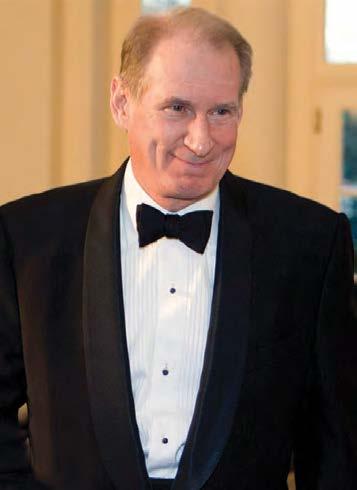
ose include the Field Museum, where
PERSONAL VIEW
Wirtz was board chair, and Northwestern University, where he was a trustee and would no doubt have hard-won perspective to o er now as the school struggles with an athletic hazing controversy sadly reminiscent of a scandal that tarnished the Chicago Blackhawks’ stunning revitalization under Wirtz’s stewardship.
It was heading the Blackhawks that put Wirtz in the public spotlight — certainly more so than Crown, who in recent years was only just beginning to step more fully into the civic-minded role his parents, Lester and Renee Crown, had carved out over
decades on causes ranging from modernizing O’Hare International Airport to protecting the Great Lakes. And indeed, the revivication of the Hawks after years of neglect and decline was a remarkable achievement under Wirtz’s time at the helm. e team’s extraordinary run of Stanley Cup wins brought hundreds of thousands of fans out of the woodwork and out onto the streets of Chicago for the kind of joyful celebrations that in recent decades have been seen only when the Chicago Cubs and White Sox won the World Series or a certain Chicagoan won the White House. And that gift of com-
munity and camaraderie is no small thing. As throngs of us celebrated, it was easy to forget, at least for a little while, how fragmented this city can be, how big our collective problems are.
If they were here now, one suspects both Crown and Wirtz would say the most important work they did happened away from the spotlight, however — in their behindthe-scenes roles as philanthropists, in uencers, advisers, employers and planners. ere was never any doubt that both men were proud of Chicago and cared deeply about its future. Both spoke of it time and again. ey also embodied a tradition that sets Chicago’s business community apart from other major metros: is city expects its business elite to play a role in its civic life, getting big projects like Millennium Park o the ground, contributing to the upkeep of beloved institutions such as the renovation of the Museum of Science & Industry, and helping elected o cials to take on giant, seemingly intractable challenges such as combating crime, improving education and creating economic opportunity in the neighborhoods as well as the Loop. Both Wirtz and Crown answered that call time and again. As a new mayor with arguably the most tenuous connection ever to the business community takes on his new role, who in the C-suites of Chicago will follow their example and extend a hand to Johnson? With so much on the line for a city still smarting from COVID, still grappling with a reputation for crime and still needing to get its scal house in order, someone must.
Something is rotten with the city’s pension funds
Chicago owes its current and future retirees more than $35 billion. However, its pension funds have only $9.2 billion in invested cash. In 2016, the “funded ratio” of the four direct pensions of the city of Chicago — re ghters, laborers, municipal employees and police o cers — was 30.8%. From 2016 to the end of 2022, the city increased its annual contribution to the pensions by hundreds of millions of dollars, and the stock market returned approximately a positive 12.8% per year. Yet the funded ratio of the four pension funds at the end of 2022 was 26.4%, a decrease of 4.4%.
e funded ratio is de ned as the percentage of assets on hand were a full payo made to annuitants and current employees. It is axiomatic that state and local pension funds should be funded to at least 90%. Private pension funds are required to be funded to 100%. at the funded ratio of Chicago’s pensions has gone down during a bull market and amid record contributions from the city means something is fundamentally
wrong with the construct of Chicago’s pension funds. e construct of a municipal pension fund is best compared to a three-legged stool. Employees and the employer make contributions; those contributions are invested and provide a return to the fund, and benets are paid by the fund to retirees — the annuitants.
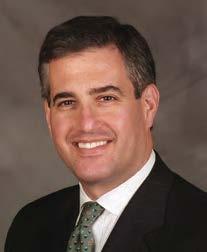
Regarding contributions made by the city and its employees: For the past 75 years, until recently, they were based on the “multiplier” — e.g., for every $1 contributed by the employee, the city would contribute $2 to the pension fund. However, the multiplier had nothing to do with the Actuarially Required Contribution, or ARC, which is conventionally accepted as the metric for su cient contributions.
Recently — and due only to 2010 legislation calling for a massive increase in property taxes, which became e ective in 2016 — has the city’s contribution been made at the level of the ARC. Employees of the city still contribute the same 9% out of their paychecks as they have for the past 20-plus years. Kudos to the Lightfoot
administration for complying with the legislation by contributing that much more, but know that this has been possible based only on signi cant increases in Chicago’s property taxes and one-time federal COVID funds. It also may have been a classic case of throwing good money after bad.
Since 2016, the average annual investment return of the city’s pension funds has been approximately 7.2%. Compare that with the S&P 500’s return of 12.8% over the same period, and you can imagine the e ect that 5.6 percentage-point di erence would have had, each year for seven years, on $9.2 billion in assets. Had the pensions elected to invest in market index funds since 2016, by now the returns would’ve resulted in funding ratios at the 58% to 63% level — not quite the desired 90%, but closer and going in the right direction. Instead, the city’s pension funds elected to invest by swinging for the fences. And they have missed.
Now we come to the di cult part: pension bene ts paid to annuitants. Keep in mind that when originally designed, pensions were meant to kick in when an employee turned 65, with bene ts paid until
the employee died 10 to 15 years later. ere was no cost-of-living adjustment, or COLA, baked into the pension fund, and the contributions made by the employer and employees were invested primarily in bonds for their xed-income returns. Fast forward and we have had medical advances enabling retirees to live longer; retirement ages have been lowered; COLAs have been put into place, and stock market returns, while in general higher than bonds’, have been signi -
cantly more volatile. Yes, we’ve also had signi cant in ation, but only twice during the past 40 years.
Combine all that with an Illinois law that prohibits any diminution whatsoever of existing pension bene ts and, well, you’ve got a recipe for a soup that’s not so good.
Could the city’s pension funds survive being funded at 26% going forward? Maybe, but only barring any more bene t
8 | CRAIN’S CHICAGO BUSINESS | JULY 31, 2023 Sound off: Send a column for the Opinion page to editor@chicagobusiness.com. Please include a phone number for veri cation purposes, and limit submissions to 425 words or fewer. Write us: Crain’s welcomes responses from readers. Letters should be as brief as possible and may be edited.Send lettersto Crain’s Chicago Business, 130 E. Randolph St., Suite 3200, Chicago, IL 60601, or email us at letters@chicagobusiness.com. Please include your full name, the city from which you’re writing and a phone number for fact-checking purposes. EDITORIAL
A LY CE HENSON
BLOOMBERG
Dana Levenson was a banker for most of his career and was Chicago’s chief nancial o cer from 2004 to 2007.
The city’s pension funds elected to invest by swinging for the fences. And they have missed.
Jim Crown Rocky Wirtz
increases and/or market downturns, both of which have the e ect of driving down the funded ratio.
However, bene t increases such as COLAs are still being considered; a permanent, annual 3% COLA was granted to re ghter retirees in 2021 by Gov. J.B. Pritzker. And since 2000, the stock market has seen six down years, each of which averaged a 17.1% decline. A few more of those and the funded ratio drops further, clearly endangering the funds’ very viability. At least one of the city’s four pension funds has been selling assets to meet retiree bene t requirements. ere’s no better way to
miss out on higher returns when the market goes up than by not having assets on hand to invest.


If you’re looking for a magic bullet to cure the city’s pension fund debacle, you won’t nd one here. However, at a minimum, the pension funds need to achieve market returns, and bene ts, unfortunately, cannot increase.
If all sides could come to an agreement about what more must be done, perhaps there’s hope for the city of Chicago’s pensions. If not, get ready for the doomsday scenario: pension fund bankruptcies and huge property tax increases.


Crain’s adds reporter to government and politics beat

Leigh Giangreco, 32, has joined Crain’s Chicago Business as a reporter working alongside veteran columnist Greg Hinz and City Hall reporter Justin Laurence to cover government, politics, policy, civic life and the city’s power elite.


Before coming to Crain’s, Giangreco worked for several years as a freelance reporter whose work has appeared in

e Guardian, Politico Magazine, Bloomberg CityLab, e Washington Post and Pew’s Stateline. Before coming to Chicago, she covered the defense industry in Washington, D.C.
A graduate of American University, Giangreco wrote, produced and directed a play based on a story from the hit radio show “Snap Judgment” for D.C.’s Capital Fringe Festival in 2018.

JULY 31, 2023 | CRAIN’S CHICAGO BUSINESS | 9
PERSONAL VIEW Continued
Leigh Giangreco
PEOPLE ON THE MOVE
EDUCATION
Loyola University, Chicago
John G. Schreiber has been elected chair of the Board of Trustees. Schreiber is the president of Centaur Capital Partners, Inc. and retired as a partner and co-founder of Blackstone Real Estate Advisors (BREA) in 2015. John is an active civic leader and philanthropist, supporting Catholic education, social service, and healthcare institutions. He received his BBA from Loyola and his MBA from Harvard Business School. He has served on the Board of Trustees since 2014.
EDUCATION
Loyola University, Chicago
Timothy P. Kesicki, S.J. has been elected to another term as vice chair of the Board of Trustees.



Father Kesicki is the President of the Jesuit Conference of Canada and the United States, which oversees common goals and international projects for the Society of Jesus.
Father Kesicki earned a BA in political science from John Carroll University, an MA in philosophy from Loyola, and an MDiv from the Jesuit School of Theology at Santa Clara University.


To place your listing, visit www.chicagobusiness.com/peoplemoves or, for more information, contact Debora Stein at 917.226.5470 / dstein@crain.com
EDUCATION
Loyola University, Chicago
Omar Brown has been elected to the Board of Trustees. Brown is senior vice president, people and culture of cer for Big Ten Conference.

Previously, Brown was an organizational transformation leader in Deloitte’s Human Capital Consulting practice, and before that served on the leadership team at the Chicago Transit Authority. He holds a BA in political science from Northeastern Illinois, an MBA from Loyola, and an MA in public policy from Northwestern University
EDUCATION
Loyola University, Chicago
Jennifer Carolan has been elected to the Board of Trustees. Carolan is co-founder and general partner at Reach Capital, a venture capital fund founded in 2015 that supports entrepreneurs bringing leading-edge technology to education. She taught in Chicago district schools for 7 years before moving to Silicon Valley to attend Stanford University. There, she used her teaching experience to support edtech founders at the NewSchools Venture Fund. She earned a BA from Loyola and an MA from Stanford.
FINANCIAL SERVICES
Key Mortgage Services, Inc., Schaumburg

Jason Brown joins Key Mortgage Services, Inc. as Vice President, Area Sales Manager. Brown will lead one of Key Mortgage sales teams, focusing on long-term growth by supporting loan of cers to achieve their goals and strengthen relationships with their referral partners. Previously at Chase, Brown brings 23 years of lending experience to Key Mortgage, including being a part of the team that led the nation in servicing lowto moderate-income homebuyers.
FINANCIAL SERVICES
Wintrust Financial Corporation, Rosemont
First Insurance Funding, a subsidiary of Wintrust Financial Corp., a nancial services holding company based in Rosemont, Illinois, with 175 locations across Illinois, Indiana, and Wisconsin, is pleased to announce the promotion of Dominique Sawko. Dominique assumed the role of SVP, General Counsel at First Insurance Funding on July 1. She’s worked with Wintrust since February 2011.
INFORMATION / DATA TECH
SPINS LLC, Chicago

Amundsen Davis, LLC Chicago

Attorney Alice Lin joins Amundsen Davis as a partner in Chicago, Illinois. Alice’s practice focuses on a broad range of federal and international tax issues. She advises publicly traded and private companies on business formations, initial public offerings, mergers and acquisitions, joint ventures, loan agreements, and public and private debt/equity offerings.

MANUFACTURING
Hirose Electric Americas, Downers Grove
Hirose Electric Americas, a leading supplier of innovative interconnect solutions, has named Mark Kojak as President & COO. Mark most recently served Hirose Americas as Chief Marketing Of cer and Senior Vice President of Sales & Operations. Throughout his career, Mark has established an excellent track record, leading the organization to record breaking results in the Americas. Mark replaces Shinya (Sid) Tono, who is returning to Hirose Electric Co., Ltd. Japan to assume a new leadership role.
MARKETING
DDB, Chicago
Chuhak & Tecson, P.C., Chicago

Chuhak & Tecson, P.C. is proud to elevate Anne M. Wolniakowski to shareholder. Recently named co-practice group leader of the Corporate Transactions & Business Law group, Anne is a corporate attorney and focuses on mergers and acquisition and transactions involving closely held entities, including acquisitions and sales of businesses ranging in size and industry. She is involved in all aspects of business planning, business formation, ownership structure, succession planning and contracts.


Kiska Howell has been elevated to EVP Head of Business Leadership of DDB Chicago, reporting to the agency’s new CEO Emma Montgomery. Kiska brings with her a no-nonsense perspective as well as experience leading creative that drives business and creates culture for brands like Hershey, Southwest Airlines, and the Molson Coors family of brands.
NON-PROFIT
Let It Be Us, Chicago
EDUCATION
Loyola University, Chicago
Melody Spann Cooper has been elected to the Board of Trustees. She is the secondgeneration owner of Midway Broadcasting Corporation, an AfricanAmerican and female-owned media company. Midway broadcasting assets include WVON 1690AM, the oldest Black-oriented radio station in Chicago; WRLL 1450AM, Chicago’s Home for Hispanic Independent Broadcasters; and its digital streaming platform, VONtv. She earned a BS in criminal justice at Loyola.
EDUCATION
Loyola University, Chicago
Brian “Fitz” Fitzpatrick has been elected to the Board of Trustees. Fitzpatrick is founder and chief technology of cer of Tock, a next generation hospitality booking system. He started Google’s Chicago engineering of ce in 2005 where he founded and led several global engineering policy efforts. He has been an open source software contributor for 25+ years and was a lead engineer at Apple, Inc. as well as vice president of public relations of the Apache Software Foundation. He earned a BA from Loyola.
Jay Margolis has been named CEO of SPINS, a leading provider of wellness-focused data and analytics for the Consumer-Packaged Goods (CPG) industry. Under Jay’s leadership, SPINS will unlock new opportunities for consumers and businesses through innovation, growth, and advanced technologies. Jay brings more than 20 years of leadership experience in the healthcare industry, with a proven growth record spanning service, sales, marketing, product, delivery, portfolio strategy, and M&A.
INVESTMENT MANAGEMENT
Fiducient Advisors, Chicago

LAW
Meltzer, Purtill & Stelle LLC (MPS Law), Chicago / Schaumburg










EDUCATION
Loyola University, Chicago
Alicia Gonzalez has been elected to the Board of Trustees. Gonzalez is executive director of Cubs Charities, where she oversees investments that serve more than 19,000 children and youth across Chicago. She previously served as founding executive director of Chicago Run, which provides tness programs that serve 15,000 students in Chicago Public Schools, and as the head of Hispanic Business Development for First American Bank. Gonzalez graduated with honors from Brown University.
EDUCATION
Loyola University, Chicago
Antonio Ortiz has been elected to the Board of Trustees. Ortiz is the rst lay President of Cristo Rey Jesuit High School. He joined Cristo Rey in 2000 as the director of corporate and foundation relations and later as associate principal, before becoming president in June 2012. From 2010 to 2012, he worked as a director at the Big Shoulders Fund. Ortiz earned a BBA and an MEd from the University of Notre Dame through the Alliance for Catholic Education (ACE) program, and an MBA from Loyola.
Fiducient Advisors, an NFP company, introduced Sabrina Bailey as the rm’s next CEO. Bailey most recently served as London Stock Exchange Group plc’s (LSEG) global head of Investment and Wealth Solutions. She succeeds Bob DiMeo, who ascends to Chairman, the rm’s founder, and joins Fiducient Advisors on July 31. Headquartered in Chicago, with six additional locations and clients in 46 states, Fiducient Advisors is an investment consultant advising a diverse set of nancial clients.

As of July 1, 2023, the rm of Robinson Payne LLC will be joining Meltzer, Purtill & Stelle LLC (MPS Law). Both named partners, Russel G. Robinson and Richmond A. Payne, are making the move, bringing a wealth of experience and expertise in estate planning, corporate and business law, and banking and nance transactions to MPS.
Robinson’s law practice focuses primarily on estate planning, estate and trust administration and charitable distributions and counsel for highnet-worth individuals and families.
Payne concentrates his practice on business law, including family-held businesses, corporate, succession planning, mergers and acquisitions, commercial real estate, non-pro t organizations and banking and nance.
Let It Be Us, a licensed child welfare agency that is changing the landscape of foster care and adoption, has named Vince Foglia as the new board chair. He will help lead the nonpro t’s strategic priorities, including placement of children with special needs. Foglia supports many organizations, most focus on healthcare, youth, and community programs. Founder of Sage Products, Foglia is an innovator in the development, manufacturing, and marketing of prevention products for healthcare facilities.

REAL ESTATE
Evergreen Real Estate Group, Chicago
Jewell Walton has joined Evergreen Real Estate Group in the newly created role of vice president of public partnerships. Most recently, she was deputy chief of RAD programming for the Chicago Housing Authority. Walton brings 20 years of industry experience to Evergreen, a leader in affordable housing, where she will diversify the rm’s portfolio by working with public housing agencies to convert assistance for existing public housing communities to long-term, project-based Section 8 contracts.


LAW
FIRM
Robinson Payne
Advertising Section
LAW FIRM
A REMOTE
Debates around hybrid work push governments, landlords and companies to reconceive what makes a dynamic and desirable workplace

In 2019, says Mark Rickmeier, CEO of product innovation rm TXI, his company had “the best-smelling ofce in Chicago.”
Working together in their West Loop o ce was essential to the TXI culture. An on-site chef cooked daily for the then-40 employees. ere were “bacon days” and cooking classes. “It was a great reason to be in the o ce because you’re being so well taken care of and having that fun vibe in the space,” Rickmeier remembers.
When the coronavirus pandemic hit and
I

 By Margaret Littman
By Margaret Littman
people had to work from home, the company chef started making food to deliver to everyone’s houses. Even then, Rickmeier thought it would be temporary: ere was no way TXI wouldn’t be back under one roof.
As the pandemic and the economy changed, so did things for TXI. e company, which now has about 75 employees, hired some sta who weren’t based in Chicago. en, after 18 years in the West Loop, Rickmeier didn’t renew the lease. See REMOTE on Page 12
JULY 31, 2023 | CRAIN’S CHICAGO BUSINESS | 11 CRAIN’S HYBRID AND REMOTE WORK SPONSORS
POSSIBILITY
Source: McKinsey Global Institute analysis Work from home by employees’ income More than $150K $100K$150K $75K$100K $50K-75K Less than $50K Respondents who strongly prefer to work from home 0% 5% 10% 15% 20% 25% 30% People who prefer to work from home are typically in higher income brackets 33% 31% 16% 11%
9%
MICHAEL WARAKSA
From
“But I was still pretty convinced that people wanted to have a regular o ce space to go to,” he says. e cities in which TXI sta were located all had WeWork spaces, so Rickmeier bought WeWork memberships for everyone and signed up for a shiny glass WeWork o ce in Chicago.
“It rarely got used,” he says. Sta missed working together, but they didn’t want to have a long commute to go to a WeWork space to sit alone in a co-working phone booth for most of the day. “We did a yearlong experiment and ultimately decided to not continue it. What we’ve discovered is that humans, at least in our company, want to be together. But paying rent is a poor way of fostering connections. It’s kind of not a very e cient use of capital,” Rickmeier believes.
Now TXI employees are scattered in di erent cities, and the company invests in di erent initiatives to keep them engaged, connected and creative.
While some folks are still focused on the “will they or won’t they” question about whether employers will mandate that sta be back in a central o ce ve days a week, workplace experts, business owners, architects, designers, academics, employees and others say this is not the right question. e question is how stakeholders — city and suburban governments, landlords, employers and employees — can help build dynamic workplaces and neighborhoods. And that’s
Reasons for working in the of ce vs. at home
Employees with exible work arrangements were asked in a McKinsey survey to explain their top reasons for working in the of ce and at home.
the conversation that Rickmeier feels TXI is part of.
It’s absolutely no secret that Chicago and its suburbs have a lot of vacant commercial real estate, not just downtown but also in the neighborhoods. A recent report by the McKinsey Global Institute found that while o ce attendance in Chicago and other cities “appears to have stabilized, it remains below pre-pandemic levels.”
While Chicago is not as tech-centric as San Jose, Calif., it does have a larger percentage of jobs that can be done remotely than other cities, says Jonathan Dingle, associate professor of economics at the University of Chicago Booth School of Business. e national average of jobs that can be performed remotely is 32%, and Chicago’s gure is 40%.
Dingle notes it was 34 years ago
that management guru Peter Drucker said commuting to the o ce was “obsolete.” Obsolete may be extreme. If 40% of Chicago area-jobs can be performed remotely, then 60% cannot. But the way o ces and the neighborhoods around them look are changing and should continue to do so. (See Crain’s ongoing look at return-to-o ce numbers for weekly updates.)
Design for the culture
Kristin Cerutti, a Chicagobased regional design leader at design rm Nelson Worldwide, says a lot of clients are asking the same questions, but the answers are di erent for everyone.
“What I tell clients is the only thing your physical o ce o ers that no other space offers is your people. I can go work at Starbucks and get a lot of what you o er in the o ce. I can work from home. I can go work from someone else’s house or from the park. But the only thing that I truly get when I come to the o ce that I can’t nd anywhere else is the other people that work in my organization,” Cerutti says.
When helping clients gure out how to redesign o ce space or reduce the square footage of a lease, she says, “we have to nd what that thing is that’s unique to them that’s going to draw their people in.”
e majority of Nelson clients are signing on to an average of 40% less square footage than they would have if they were starting the same project two to three years earlier, she says. Even those who are keeping large footprints are thinking about those spaces di erently, such as not having a dedicated desk for everyone on payroll.
“We even have a law rm who
recently just moved in, and 75% of their seats are unassigned,” Cerutti says. “ at’s practically unheard of in a law rm scenario.”
Cerutti encourages clients to understand what employees are feeling when they are asked to make changes. Are they worried about cleanliness if they are sharing a desk? Not having somewhere to store their stu ? Commuting into an o ce only to spend the day on Slack?
Once you understand what your o ce culture needs, design the space accordingly. Simple xes include designating zones. Even if people don’t have assigned desks, the o ce can be arranged so that certain departments have speci c areas, but folks can grab any desk in that area. at allows people to work collaboratively with their team, but not have to have workstations sit unused. Cerutti says some clients are consolidating co ee and water stations so that people are forced to unintentionally bump into each other as they go to ll up.
“Your o ce needs to function more like an airport lounge or a hotel lobby than an o ce space,” she says. “ ose types of areas have proven that you can have thousands of people access them on a daily basis. And very rarely do you ever get a scenario where a bunch of people show up and don’t have a place to go. It’s just changing the mindset a little bit on space.”
It is not just the physical spaces that may change, but the furniture in them, too. As Crain’s reported, exhibitors at the annual NeoCon convention in Chicago showed adaptable desks designed for collaboration, acoustical pods for private phone calls and collapsible walls for changing workplace sizes.
Co-working spaces, too, are part of the overhaul. As TXI discovered, many employees don’t want to be siloed in o ces or working side by side (albeit quietly, with headphones) in an open

room where no one interacts.
At Itsy Bitsy Play & Cafe near Lincoln Square, parents can use co-working space while a “playmaker” takes care of kids at the on-site playground, an example of a space that o ers something not available at home.
Mike Healy, co-founder of Guild Row, an Avondale co-working space with a nonpro t, community-building focus, sees spaces such as his working more like a “student union” than the traditional rent-a-desk co-working space of a decade ago.
“We’ve become Gene & Georgetti 2.0,” he says. e ebb and ow of the 800 Guild Row members has changed since the space opened in 2020. Now, he says, it is more like a health club, where certain times of the day welcome the masses while other periods are less crowded, rather than people sitting in a chair from 9 to 5.
Healy is proud that connections at Guild Row have led members to get jobs, to join nonpro t boards and otherwise contribute to relationship-building and other factors in Chicago being a dynamic city. Guild Row members come from neighborhoods from Roscoe Village to Bronzeville, and he sees spaces like Guild Row contributing to “the city’s cultural
pipeline.” If fewer workers go downtown for the long term, he wonders whether spaces like Guild Row in neighborhoods will become like the Economic Club of Chicago and other institutions that were downtown for decades.
Change in patterns
When TXI jettisoned the WeWork expense, it started a number of other programs, including Work from H.O.M.E. at’s an acronym for “hang out, meet and experiment.” TXI employees occasionally work in each other’s neighborhoods. Employees take turns hosting, showing co-workers favorite co ee shops and the places they work and get inspiration. e program helps people feel connected not only to their co-workers but to their neighborhoods.
As fewer people head to a downtown o ce job ve days a week, the businesses that have supported those workplaces will have to adapt, too.
Sara Neuner, who works in communications at Northwestern University’s Feinberg School of Medicine in Streeterville, noticed her shopping and dining out patterns change. Neuner lives in Oak Park, and when she rst started
12 | CRAIN’S CHICAGO BUSINESS | JULY 31, 2023
CRAIN’S HYBRID AND REMOTE WORK
REMOTE
Page
11
TXI employees work together at the Bond Collective co-working space at the Civic Opera Building. | PHOTOS BY JOHN R. BOEHM
While Chicago is not as tech-centric as San Jose, Calif., it does have a larger percentage of jobs that can be done remotely than other cities.
Jonathan Dingle, associate professor of economics at the University of Chicago Booth School of Business
0% 2% 4% 6% 8% 10% 12% 14% 16% 18% 20% Top reasons for working in the of ce
Source: McKinsey Global Institute analysis
20% 12% 11% 10% 9% To work with my team To comply with my employer’s policy To increase productivity To meet clients
better access tools, technologies
Note: Respondents were asked to name their top reason. Only the ve most popular responses are shown.
To
going back to the o ce on a hybrid schedule, she was driving, in part because the el trains did not have a reliable schedule. at drive meant less shopping downtown because she was missing the 30-minute window shopping
or errand opportunity between the o ce and the train.
Bevan Bloemendaal, chief brand and creative o cer at Nelson Worldwide, focuses on retail design and sees opportunities for “beautiful moments of collabora-
tion” in retail spaces. Just as o ces have to think about what they can o er employees that the home o ce cannot, retail spaces need to think about what they can o er customers so they feel like they are part of the commu-
nity and not just another online order.
Bloemendaal imagines an urban environment where groundoor commercial space can be used by pop-ups such as the immersive Van Gogh experience, Meow Wolf and other activities that will make people want to go to those areas. Retail spaces that function more as showrooms than warehouses can o er customization and entertainment options. ose elements may get people jazzed about interactions they can’t have online.
At TXI, part of the funds not being used for rent are spent on onboarding new employees in a way that helps them feel connected and learn the company culture (the former o ce chef now heads that e ort).
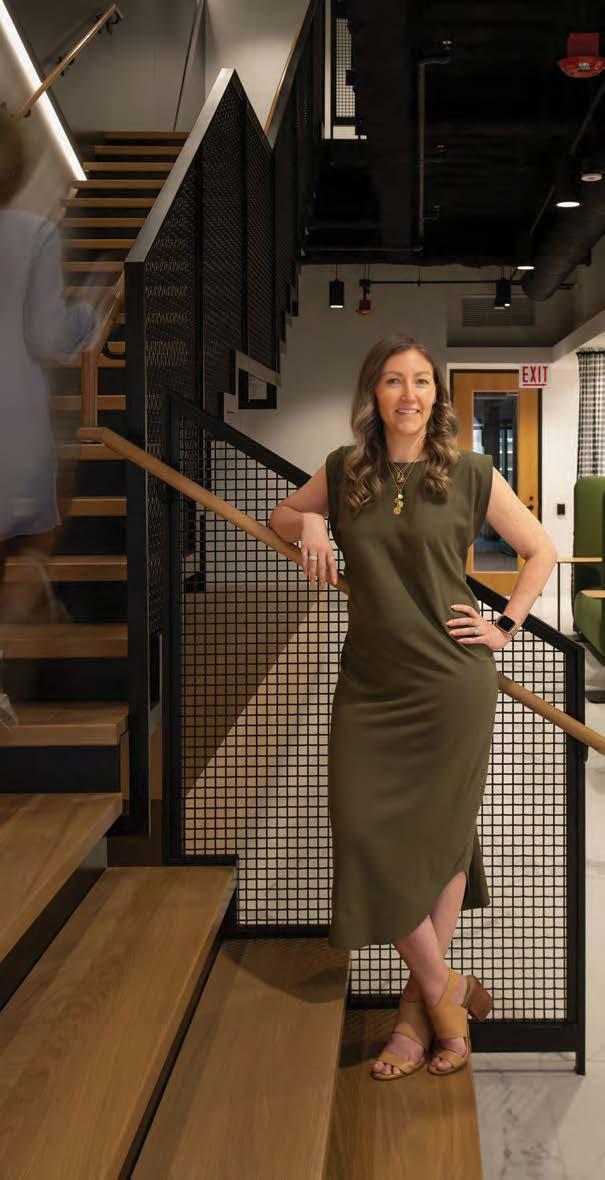
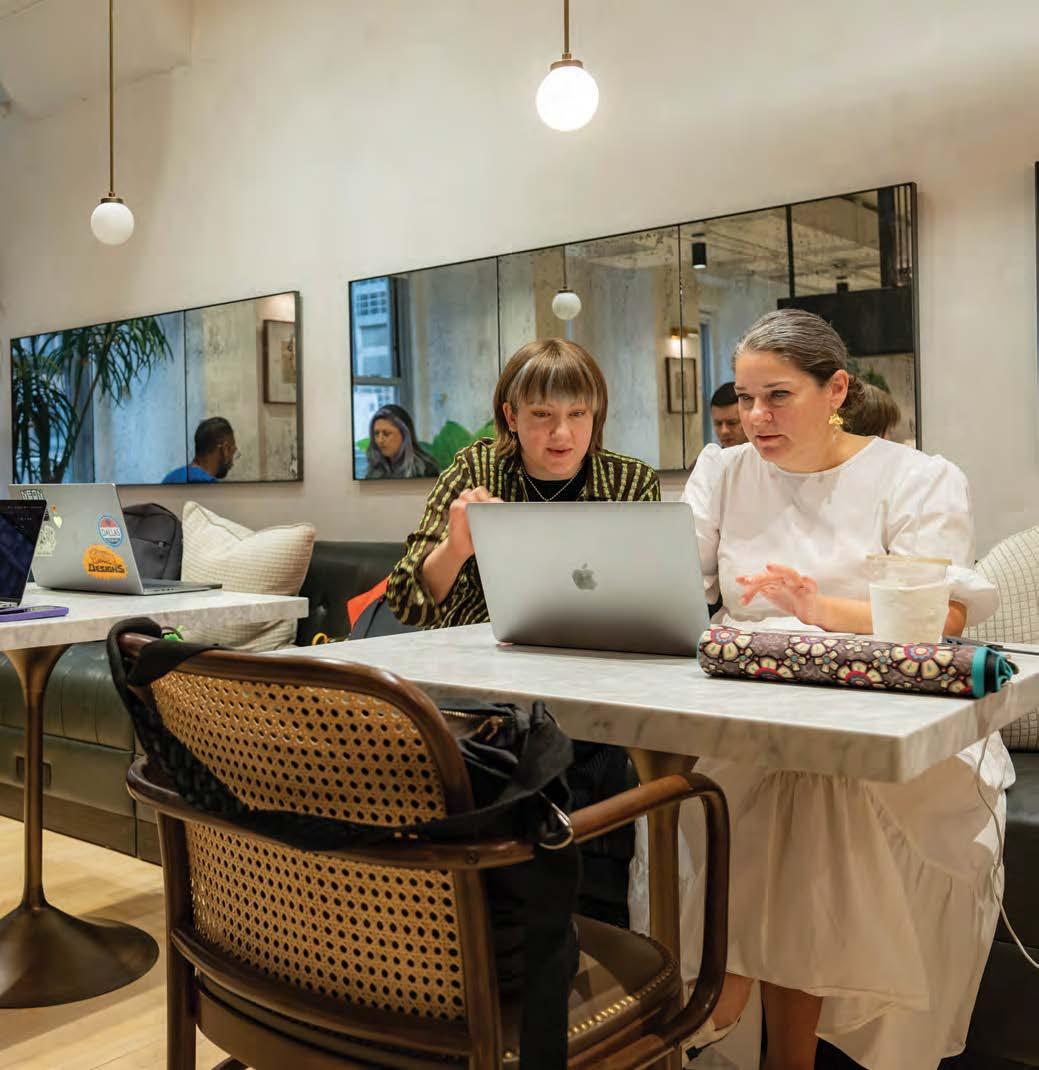
Farpoint Development coowner and Principal Regina Stilp agrees that this aspect is crucial to a healthy workplace. Leaders need to think about building spaces that foster mentorship as part of collaboration. Employees who went to college during the pandemic, for example, may have had limited experience with
in-person classes and in-person group projects. Asking them to onboard and develop skills remotely isn’t good in the long term — for them or their employers.
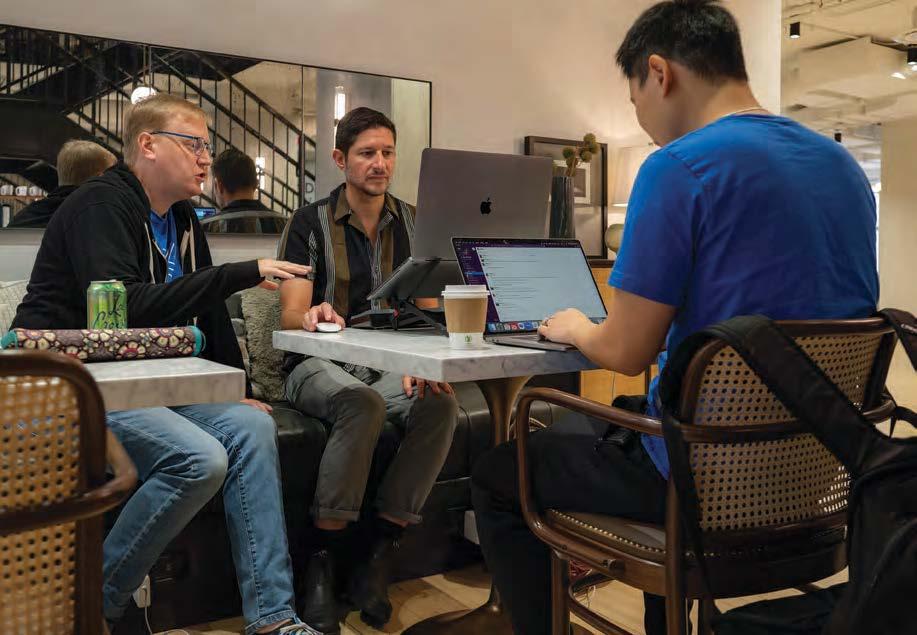
To make that happen, it is incumbent on C-suite executives to show up, Stilp says. “One of the greatest assets in an o ce is senior leadership. You can’t be in your house in Florida and expect everybody else to come into the o ce.”
Not everyone sees adapting to remote and hybrid schedules as the way of the future. Tom Gimbel, founder and CEO of LaSalle Network, a Chicago-based staing rm, predicts that by the fourth quarter of this year, fully remote work will be a memory and hybrid work will be more in o ce than not, perhaps with what used to be “casual Fridays” now “remote Fridays.”
“Remote work is terrible for the city. It is detrimental for the longterm development of the city,” Gimbel says, citing the decline in businesses like co ee shops and restaurants that relied on downtown workers. “ at is part of the fabric of the city.”
JULY 31, 2023 | CRAIN’S CHICAGO BUSINESS | 13
HYBRID AND REMOTE WORK CRAIN’S
From left: Mark Rickmeier, CEO, Cameron Silver, senior software engineer, and Jason Liao, software engineer, all of TXI, work together at the Bond Collective co-working space at the Civic Opera Building.
Kristin Cerutti is a Chicago-based regional design leader at design rm Nelson Worldwide.
Leaders must learn to manage from the middle
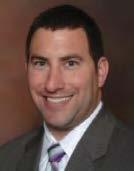
As the post-COVID workplace evolves, the pendulum is swinging between two extremes. On one side, many employers are requiring more in-person attendance with the belief that returning to the o ce improves productivity. On the other side, some companies allow permanent remote work as a way to attract talent.

Rather than dwelling in the extremes, the way to manage today can probably be found in the middle. With self-re ection, input from colleagues and a genuine desire to foster balance, managers can decide what makes the most sense for their teams — based on people’s roles, the team’s priorities and goals, and how work gets done at the company. Here are some issues to consider:
Square footage is not the measure. Many companies have opted for hybrid work, sometimes with a xed schedule. One CEO told me recently that part of the workforce at his company is in the o ce Tuesdays and ursdays and the rest on Mondays and Wednesdays. While that may enable a company to reduce its o ce space, this decision should not be based on square footage alone. Far more important is the
impact on how people collaborate and experience the culture. For example, are there times when the whole company should have the opportunity to be in the o ce together?
Unlocking the value of in-person work. A change in the labor market, especially layo s, has made it easier for some employers to require in-person work. For example, last year, Apple began mandating its employees work in the o ce at least three days a week to put greater emphasis on in-person collaboration. Google reportedly will take in-o ce attendance into account in employee performance reviews. A “gotcha” attitude, however, can make in-person work feel restrictive and even punitive. e real issue is what value is created by working together in the same location. Are the best ideas generated when people are physically present? How do team members feel about brainstorming in person versus online? Managers need to reach out to their teams to hear what people value about in-person work — and when it makes the most sense.
Seeking balance for everyone. During the pandemic, remote work and the ab-
sence of long commutes improved many people’s life balance. Now, post-pandemic, many employees still prioritize exibility in where and when they work. Perhaps they relocated during the pandemic, making in-person work nearly impossible. Unless managers understand their team members’ individual circumstances, it will be hard to strike a balance between what people want and what the company needs to optimize productivity.
Check-ins are more than just about work When I was a corporate leader, I made it a habit to go from cubicle to cubicle speaking brie y with people — not because of a business agenda, but simply to check in about their lives, what help or support they might need, and anything they wanted to discuss with me. Managers today need to replicate this practice. One
manager I know convenes a team meeting every Wednesday to talk about the status of projects, timelines, obstacles, customer feedback and new opportunities. However, she never uses this group gathering about the business to check in with people personally. at happens on Mondays and Tuesdays when she calls each team member and has a short conversation about how things are going. Granted, check-ins happen naturally when people are together in an o ce, but even when they are remote, a simple outreach from a manager can make all the di erence.
Managing in the post-COVID world isn’t just about choosing between in-person and remote work. Rather, it’s striking the right balance based on what makes people feel happy and engaged and helps teams be more creative and productive — no matter how and where they work.
Wilmette made itself into a more desirable destination
Simply put, downtown Wilmette is a place people and businesses want to be. e creation of a unique downtown experience is an ongoing journey that requires planning, exibility, calculated risk-taking, public investment, a little bit of luck and the willingness of small-business owners to invest in the community. It has been 13 years since Wilmette embarked on a Downtown Master Plan, and the downtown continues to evolve and grow, especially as it adapts to and thrives from the changes forced upon us by the pandemic.
Prior to the pandemic, Wilmette was known as a top dining destination on the North Shore. White glove service from village sta assisted small-business owners in navigating the challenges of starting a business, reasonable liquor controls and zoning regulations provided the business community with predictability, and a commitment from the village board to add building height and density in the downtown ensured vibrancy and a new customer base for businesses.
Since the pandemic, Wilmette continues to be an outstanding dining destination but has grown to be a place where people want to be. During the depths of the pandemic, the village took the risk of proceeding with a streetscape improvement project that improved public gathering spaces and added outdoor dining opportunities. As people
began to appreciate spending time outdoors with friends and family, the village’s focus on placemaking and community building, combined with a variety of familyfriendly events, helped to supercharge excitement around our downtown.
e new, inviting outdoor spaces coupled with an increased daytime population due to work from home have created an opportunity for breakfast, lunch and retail businesses to thrive. e downtown is now vibrant at any time of the day. While only a few years ago most of us were lamenting the death of brick-and-mortar retail, work from home and the desire for experiential living has led to a retail renaissance in downtown Wilmette.
Local, regional and national businesses have taken notice of downtown Wilmette, thereby providing a wide array of options for customers and ensuring a healthy business mix. Over a 12-month period, at least ve new retailers will open their doors, as will several restaurants, each offering breakfast or lunch service. Outdoor dining is an essential component of each new restaurant, and the village plays an active role in this by welcoming patrons to dine picnic-style outside village hall and through the creation of a shared public-private dining space in a pocket park at the heart of the downtown.

As the saying goes, a rising tide lifts all ships. e success of downtown Wilmette post-pandemic has helped to reduce vacancies across the village’s eight business districts, including long-struggling districts.
e downtown resurgence has proven to the development community that Wilmette
is a community worthy of their investment. Exciting new developments are underway to revitalize the village’s regional shopping destinations, Edens Plaza and Plaza del Lago, and we see more interest from prospective businesses in downtown Wilmette than ever before.

14 | CRAIN’S CHICAGO BUSINESS | JULY 31, 2023 CRAIN’S
Harry Kraemer is an executive partner at Madison Dearborn Partners and a clinical professor of leadership at Northwestern University’s Kellogg School of Management.
HYBRID AND REMOTE WORK | COMMENTARY VILL AGE OF WI LMETTE
Michael Braiman is village manager of Wilmette.
TXI employees work together at the Bond Collective co-working space at the Civic Opera Building. | JOHN R. BOEHM
I’m 24 and I love being in the o ce
Against all odds, there is one thing all business experts agree on today: Working in the o ce full time is dead, probably forever. e McKinsey Global Institute’s July 2023 report on the issue proves the point. Of course, o ce attendance varies vastly by company, area and industry, but I believe we need to reverse this trend as much as possible. Otherwise, current and future workers — as well the companies they work for — will be sorely compromised.
How so?
Consider the biggest complaints we’re hearing about America’s current labor market: Talent shortages are rampant; already extensive skill gaps are widening; and companies can’t retain workers. On the other side of the divide, workers say they are frustrated, disrespected and disengaged; lack purpose and value; and have bad managers who don’t offer them guidance or opportunities to grow.
As a 24-year-old account executive in a digital marketing and communications rm, I’ve come to see that being in the ofce regularly with your whole team goes a long way toward solving the problems on both sides of this divide. Even more signicantly, it’s critical for productivity, sta development and knowledge transfer.
While earning my undergraduate and master’s degrees in Mumbai, India, I worked in several offices. Until the pandemic hit, these were traditional 9-to-5 jobs. But they were better than traditional because what I experienced and learned surpassed my expectations.
When I started a new job at a global public relations and integrated com -

munications agency six months into the pandemic, we were still remote. But by the end of 2021, we were back in the office three times a week. I was relieved to be there. Working from home was convenient and saved me time and money for all the obvious reasons (no commuting or eating out, no need for a work wardrobe, etc.), but I felt isolated, burned out and ill-informed from being remote.
Working from home had big consequences. I was in a silo and never realized how much I missed human interaction until it was gone. So were the important resources that came with it: inspiration, collaboration and knowledge about different ways of looking at things or executing that could be more effective.
In 2022, I moved home to the United States, where I was born and had lived until I was 10. Unfortunately, the office died far more quickly in the U.S. than in India, where people still come in three to four days a week. Nevertheless, I got a job in Chicago, moved here in November and started work remotely.
Fortunately, our company started a weekly office day in January. Our team is an astonishing melting pot of cultures, backgrounds, personalities and ages. The myriad outlooks, experiences and perspectives have given me greater insight into our work, shown me new ways of doing things and helped me harness new strategies to create better outcomes for our clients.
Since the firm grew during the pandemic we often sit around our large conference room table as we work, which has
Well-being and working aren’t mutually exclusive
Typical co-working today is pretty much a space to work that isn’t at home, maybe a conference room and possibly some snacks and endless co ee. What is sorely missing from today’s co-working spaces is a sustainable and supportive environment that motivates, enhances and encourages healthy productive behavior.
We believe people need a workspace that allows for connection, inspiration, doses of energy building and rest to ensure time is well spent. e water cooler talk we envision looks like a micro-meditation class, or a trip to the smoothie and juice bar — while the new happy hour looks like a group workout class or yoga followed by delicious food and drink. e creativity boost moves from overconsumption of co ee to a tness workout, a walk on the Riverwalk in the sun or attending group energy healing.
is is the space created at Biân, a co-working environment within a broader ecosystem where your work time ts perfectly into your life and activities, not the other way around.
Biân sits at the intersection of high pro-
ductivity and elevated wellness. Biân members align their well-being and their work lives with a deep understanding that balance, collaboration, evolvement and vitality are the foundation for a healthier, happier and more successful future, professionally and personally.


Biân co-working includes private rooms, conference rooms, large and small tables for various group working activities, private wraparound chairs for individual work, and fully appointed conference rooms with
increased our team’s ability to communicate, collaborate and create immensely. At the end of every day, I feel like I’ve learned so much and achieved more than just completing my to-do list. My skills are better. I feel respected, engaged, and I understand the value of what we do. And I love the added bonuses that come with being with my team, like exploring the city and happy hours after work.
It has been interesting to collaborate with such a diverse team that brings so many strengths to the table. I prefer meeting in person for the added value of their knowledge. More brains are better than one and lead to better results. While working from home has its merits, I hope we can make more office days a priority. It’s an experience that can’t be matched by technology.
state-of-the-art audiovisual. We bring focus to one’s physical, mental, social and spiritual health that directly impacts one’s work life.
Our corporate programming provides those at any level of an organization the ability to create a human- and healing-centered workplace culture. Biân o ers workshops to give participants the ability to build on their own leadership style and better understand the crucial role they play in the wellness of their team or workplace.
When your days can seamlessly ow between taking care of your health in all respects, to ample workspace, appropri-

ate settings for business meetings and meals, food and beverage that sustain you throughout the day, and events that generate conviviality and growth, your outcomes substantially and positively increase.
In this post-pandemic world, everyone will need to continue adjusting to a new paradigm of working, living and self-care. Organizations are wise to listen and invest in meaningful ways to support their human capital. Such investments pay great dividends with productivity, creativity, joy at work, collaboration, trust and loyalty — all of which grow and contribute to the health of a company and its workforce.

JULY 31, 2023 | CRAIN’S CHICAGO BUSINESS | 15
COMMENTARY | HYBRID AND REMOTE WORK CRAIN’S
Jane Sharma is an account manager at Purpose Brand, a PR, brand and digital content marketing rm in Chicago.
Joe Fisher is co-founder and CEO of Biân; Mar Soraparu is co-founder and chief wellness o cer. Biân is a private social and wellness club plus co-working space in Chicago.
GETTY IMAGES
Biân’s lounge provides space for its members to work between meals and appointments. | COURTESY OF BIÂN
HOW-TO GUIDE:
NAVIGATING THE WORLD OF HYBRID WORK
A place of work is about more than where people are — be it in the of ce or at home. Whether it’s two, three or four days a week, employees now spend far less time working at the of ce than they did before the pandemic, according to the McKinsey Global Institute’s “Empty Spaces & Hybrid Places” report. Despite return-to-of ce mandates, many employees have shown a preference for a hybrid work schedule, which has been adopted by 90% of the organizations surveyed by McKinsey.
I
By Cassandra West
Here are ve ways everyone can approach the new hybrid work world:
DEVELOP MULTIPURPOSE SPACES
Workplaces should be somewhere that employees enjoy spending time or where they can take part in compelling events and activities.
Create hospitality-oriented workplaces to better attract, engage and retain talent by taking a cue from hospitality, viewing employees as valued guests.

Design more modular spaces that can adapt to changes in work patterns from week to week.
Provide an ef cient, digital way to organize hybrid work patterns and preferences.
EMBRACE THE 40% OFFICE
Employees thrive when they spend 23% to 40% of their time in the of ce, studies show. Even when in the of ce, people rarely interact with those outside their immediate proximity. In the pursuit of greater connection and culture, companies may want to consider removing some or even all desks in favor of a diversity of spaces. Heads-down work can be done effectively at home, so of ce real estate might best be adapted for collaboration, culture and knowledge sharing.
RETHINK GEOGRAPHY
Too much focus on building amenities (on-site cafeteria, for example), and not enough on what the surrounding area offers, may leave employees feeling cloistered. A work-fromhome study observed that employees working remotely in the same city often convened organically to discuss work and socialize, underscoring the value of time together. To reinforce this natural tendency, companies may consider a loose of ce model with clusters of satellite locations that could be storefronts, co-working spaces or any number of informal meeting places like cafes or parks that change according to need.
REBRAND ‘THE OFFICE’
For many people, the word “of ce” means drudgery, conformity, rows of people performing mundane tasks. As simple as it sounds, try using another word for the place where productivity takes place. For example, studio, atelier, workshop, day house or co-lab. Taking a fresh and even playful approach to the workplace could help employees feel more positively toward where they spend so much time.
EARN THE COMMUTE
Employees will default to staying home if they don’t have a clear reason to be in an of ce. For many, commuting costs them time and money. Employers need to give employees motivation to spend time commuting. Mentorship and collaboration are two big reasons for being in person. Mentorship increases by 25% when people come together face to face, research shows. “Some employees are also simply more extrinsically motivated and thrive working around colleagues, while others are more intrinsically motivated and productive working from home,” says hybrid expert Gleb Tsipursky.
‘The 9-to-5 is gone.’ Getting the work done is what matters.
Margaret Littman
Chicago Transit Authority ridership for 2022 was 243.5 million, an increase after the declines of 2020 and 2021 but still significantly lower than the 468.1 million in 2018 or the 516.9 million in 2010.
Changes in commuting patterns aren’t just about transportation, as they also change the
ways people interact with their environment. If people are not taking a bus or the el, they’re not stopping for coffee, shopping downtown, reading on the train or talking to other commuters.
Jani Westcott, who works in advertising, now commutes by car three days a week to a client’s office in Chicago from Oak Park. She finds the trains less reliable than they used to be. She doesn’t
like to haul the stuff that she would have left in her office in the past — perhaps gym clothes, water bottles, an extra sweater or a laptop — on the train. And it’s easy enough to use SpotHero for parking. But she misses the meditative time she had on the train to do The New York Times’ crossword puzzle and the “secondary encounters” she’d have with folks at her regular coffee shop.
Some commuters feel like the traffic — aggravated by construction on the Kennedy Expressway, for example — is worse with fewer people taking public transit. “Commuting is horrific right now,” says Regina Stilp, co-owner and principal of Farpoint Development. Stilp is a devoted in-office worker but also believes the flexibility that came with schedules during the pan -
demic should be part of workplaces of the future. “The 9-to-5 is gone.”
“People are coming in later. I don’t care if people come in at 10 a.m. I don’t care what time they come in. It’s more resultsoriented. Doesn’t matter when you get it done, as long as you get it done. I trust people,” she says. “If you don’t trust people, then there’s a bigger breakdown.”
16 | CRAIN’S CHICAGO BUSINESS | JULY 31, 2023 CRAIN’S HYBRID AND REMOTE WORK
01 02 03 04 05
JOHN R. BOEHM
Chicago’s loss could be suburbs’ gain as the remote work trend rolls on
Companies transitioned their workforces out of the o ce and into their homes at the start of the COVID-19 pandemic in what was intended to be a temporary measure. More than three years later, the public health emergency has ended, but remote work is here to stay.
A recent study found that the number of remote-friendly job positions is still increasing in Chicago. From 2021 to 2022, Illinois saw a 24% year-over-year increase in the number of residents who work remotely. Nationally, the number of remote workers dropped 1.2% over the same period.

ese statistics signal an important shift in Chicago. Remote work policies a ect more than just a company’s employees: Having fewer commuters impacts Chicago’s public transportation system, tra c patterns, consumer spending, tax revenue, public safety and more. While the number of remote employees in Illinois climbs, Chicago o ce-occupancy stagnates at roughly half of pre-pandemic levels. Public transit ridership remains at less than 70% of pre-2020 levels.
Employees may not fully understand how remote work impacts their city. According to a recent Harris Poll survey, a third (34%) of full-time onsite employees, but only 24% of full-time remote employees, think that remote work has had a net-negative economic impact on Chicago.
Unfortunately, onsite employees’ less-optimistic outlook may hit closer to reality. Downtown Chicago su ers nancially when fewer commuters use local transit and frequent local businesses and restaurants. In a parallel situation in New York, experts estimate that downtown Manhattan will see $12 billion less in expenditures due to the rise of remote work throughout the tri-state area. We can expect downtown Chicago to similarly su er a large economic loss, even despite its better-than-average o ce occupancy rates compared to other major metros.
Outside of consumer spending, remote work will also change the commercial real estate industry. Most businesses are locked into long-term ( ve or 10 years) commercial lease agreements. ese extended leases prevented an immediate collapse of the commercial real estate industry at the start of COVID. Once they end, however, companies may save money by downsizing their o ce space or going fully remote. Ofce property in U.S. cities is already valued 38% lower than it was pre-COVID.
Chicago is a large and diverse metro area. e transition to remote work that emptied the down-

and working here

In and around Chicago
town has simultaneously bene ted the surrounding suburbs by keeping more suburbanites at home, and spending in their local neighborhoods. Many city residents also relocated to the suburbs once remote work became an option.
Half of employed Cook County residents (51%) agree that remote work has had a net-positive impact on the Chicago suburbs. Only 1 of every 10 employed residents (11%) think remote work has had a net-negative impact on the suburbs. In contrast, almost half (44%) of employed Cook County residents think remote work has had a net-negative impact on downtown Chicago.
ree-quarters of employed Cook County residents (74%) agree that work plays a signi cant role in their decision to live in the Chicago area. Unsurprisingly, this drops to 68% among full-time remote workers. While most employed residents (76%) agree that the greater Chicago area is a good place for remote workers to live, this decreases to 62% among fully remote employees. If more workers go fully remote, Chicago risks losing residents to other less expensive, and more remotefriendly, cities.
While remote work poses many challenges to downtown Chicago’s economy, remote employees may not be willing to cede this perk. Seven in 10 employed Cook County residents who work remotely at least some of the time (69%) note that remote work has improved their quality of life. Rather than hoping for an end to remote work policies, Chicago must adjust to the current employment trend.
Chicago’s downtown was designed to support a constant tide of commuters, but remote work has threatened this ecosystem. If the number of remote workers continues to increase, Chicago businesses will need to rethink where they establish roots. We may see the suburbs gain more restaurants, bars and other entertainment options if remote employees continue to spend more time and money there. Downtown Chicago must look for new ways to attract crowds, perhaps converting o ce space into unique entertainment venues to draw consumers back to this formerly bustling area.
JULY 31, 2023 | CRAIN’S CHICAGO BUSINESS | 17 HYBRID AND REMOTE WORK CRAIN’S
Arvin Dang, senior product designer at TXI, works at a co-working space at the Civic Opera Building. | JOHN R. BOEHM
Living
Harris Poll asked whether the Chicago areas is a good place to live for remote workers.. Agree Disagree All employed residents On-site workers Hybrid workers Remote workers
type of impact do you think remote work has had on each of the following places? Positive impact No impact Negative impact Not sure Greater Chicago area City of Chicago Downtown Chicago Chicago-area suburbs 0% 10% 20% 30% 40% 50% 60% 70% 80% 90% 100% 0% 10% 20% 30% 40% 50% 60% 70% 80% 90% 100% Source: Harris Poll Employed Cook County residents, on-site workers, hybrid workers, remote workers Source: Harris Poll 76% 76% 85% 62% 24% 24% 15% 38% 45% 41% 36% 51% 24% 17% 14% 28% 6% 6% 6% 9% 25% 36% 44% 11%
William Johnson is CEO of e Harris Poll, a global public opinion polling, market research and strategy rm.
What
Wednesday is the new Friday

 Margaret Littman
Margaret Littman
Across the board, experts say, it is Tuesday, Wednesday and ursday when workers want to come into the o ce in person. (Chicago Transit Authority ridership stats support this, with Wednesday and ursday being the busiest days of the week on trains and buses.) A handful of people want to come in on Monday. No one wants to come in on Friday.
again reconnect with co-workers and out-of-towners meet colleagues for dinner. Wine, cocktails and mocktails are all popular on Wednesdays. And Thursdays, which Chiappetti says have traditionally been slow, are picking up. In general, he says, folks stay at a table longer than they used to, having more leisurely conversations. Fridays have stayed relatively stable, but Saturdays are way down. Suburban folks who used to come into the city on a Saturday night? They’re staying closer to home.
Those work patterns change not just the patterns of the workforce, but also the ways in which businesses that support those work crowds need to adapt.
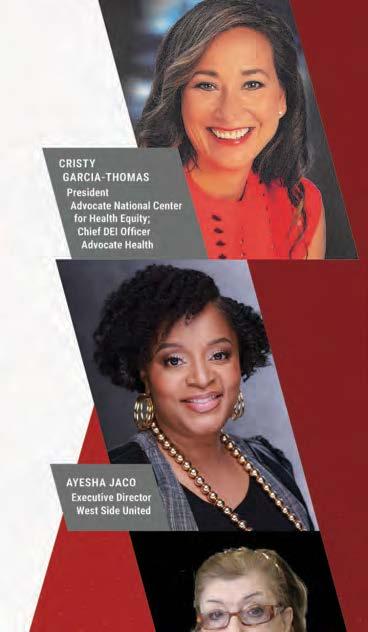
At Albert restaurant in Hotel EMC2 in Streeterville, executive chef Steve Chiappetti says business on Wednesday is up 35% month over month. He’s seeing an increase of Wednesday happy hour, as folks working downtown
In Wilmette, there’s been an intentional e ort to keep folks in the suburb, says Village Manager Michael Braiman. While the process started in 2010, it continued with intention when the pandemic threatened businesses in 2020. e suburb’s master plan called for enhanced streetscapes, more density and plans to encourage more people to patronize downtown businesses.


While restaurants led the charge, new retail businesses — both local small businesses and national chains—opened this year, and as
a result, “downtown Wilmette is a destination not just at night but during the day,” he says.


It’s a reasonable assumption, Braiman says, that some people are choosing to work, shop and play in downtown Wilmette because they are not commuting elsewhere as often. While e orts have been successful, Braiman says the suburb will continue to support rst-time businesses and evaluate barriers to development so that is “welcoming and inviting to all.”
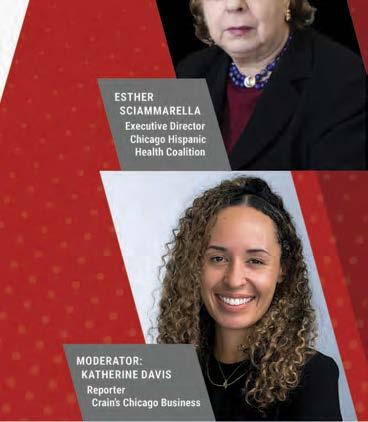
“Vibrant business districts are incredibly tenuous,” he says. “We are always working on it. It is constant nurture and care.”

18 | CRAIN’S CHICAGO BUSINESS | JULY 31, 2023 CRAIN’S HYBRID AND REMOTE WORK
VILL AGE OF WI LMETTE PHOTOS
“Downtown Wilmette is a destination not just at night but during the day.”
Village Manager Michael Braiman
Allstate’s Illinois auto rates soon will have climbed more than $1,000 in 20 months
The state’s second-largest car insurer is boosting premiums an additional 11.2% on average next month, just the latest in a series of steep increases amid rising costs
Illinois drivers insured by Allstate soon will be paying more than $1,000 more per year on average than they did at the beginning of 2022 after yet another rate hike takes e ect next month.
e state’s second-largest auto insurer is raising Illinois rates
11.2% on average, e ective Aug. 17, adding $275 a year, or $23 a month, to the average premium, according to a ling last week with the Illinois Department of Insurance. e Illinois increases are at Allstate Fire & Casualty, the company’s primary unit insuring drivers here. at unit covers the majority of Illinoisans Allstate insures, but not all.
Average annual premiums at Allstate Fire & Casualty totaled a little over $1,700, or $142 per month, when 2022 began. With the new increase, the unit’s average yearly premium will total $2,732, or $227 per month. at’s a 60% increase in 20 months.
Nationally, Northbrook-based Allstate has lost money insuring cars — and for that matter as a company — in each of the past four quarters. Illinois’ second-largest insurer is expected
to post another loss when it reports second-quarter earnings this week.
Not surprisingly, with price hikes so steep, Allstate is losing customers in its home state. In this year alone, Allstate Fire & Casualty’s number of Illinois auto policies has dropped 4% to a little over 350,000 from 364,376, according to Insurance Department lings. is is the second substantial auto rate hike for Allstate in Illinois this year. In February, Allstate Fire & Casualty increased auto rates by 7.6% on average.
Last year’s increases were even more dramatic. Allstate hiked auto rates twice in Illinois, rst by 12% and then by 16%.
Rivals raising rates, too
Allstate’s rivals also are raising rates this year, but not at the same clip. Bloomington-based State Farm, by far the largest vehicle insurer in Illinois, with about a third of the market, has hiked premiums by more than 12% so far in two chunks. Progressive, the third-largest auto insurer in Illinois, has increased rates here by between 8% and

10%, depending on whether consumers buy through an independent agent.
e rampant auto-insurance ination has generated activity in Spring eld, with bills introduced last session to give state regulators approval authority over rate changes and to require insurers to disclose their underwriting results in Illinois. Neither advanced in the face of industry opposition.
Atlanta widens ight lead over O’Hare
Atlanta’s Harts eld-Jackson International Airport is widening its lead over O’Hare International Airport when it comes to the number of ights, in part because United and other carriers are ying larger planes out of Chicago.
Harts eld-Jackson remained the nation’s busiest airport, based on total ights through the rst six months of year, followed by O’Hare, Dallas-Fort Worth and Denver, according to new statistics from the Federal Aviation Administration.
Insurers have struggled to keep up with higher claims-settlement costs stemming from inationary pressures they’re feeling. e spike in used-car values, which now has leveled o , was an early cause when the stay-athome period of the pandemic rst receded. More recently, rising costs for medical care and car parts have contributed to the industry’s woes.
O’Hare had 7% fewer ights through June than Harts eld-Jackson, compared with a 2% gap at the end of 2022, FAA data shows. Before the pandemic, O’Hare had 2% more ights than its Atlanta rival.
e number of ights in and out of O’Hare during the rst six months of the year was up just 0.4% from a year ago. Hartseld-Jackson was up 7%. However, activity at O’Hare tends to pick up in second half of the year, which could reduce the gap.
e nation’s airports are still rebounding from COVID-19 restrictions that reduced air travel. e recovery at big airports such as O’Hare, which have more international ying, has been uneven.
year
State Farm hiking Illinois homeowners’ premiums for the second time this
Driving the changes: ‘In ationary pressures and supply chain issues, along with higher claim costs’
State Farm is increasing what it charges Illinoisans to insure their homes for the second time this year.

e Bloomington-based insurer, by far the largest in the state, is hiking homeowners’ rates here by 4.2% on average beginning Sept. 15, according to a ling with the Illinois Department of Insurance. at will hike the average premium by $45 annually.
In March, State Farm increased homeowners’ rates by an average of 2.4%, a $25 annual increase.
“Inflationary pressures and supply chain issues, along with higher claim costs, continue to drive our homeowner rate changes in Illinois and beyond,” State Farm spokeswoman Gina Morss-Fischer said in an email. “We are making adjustments to ensure we match price to risk. Overall changes in premiums for individual homeowners will vary.”
State Farm had 33.5% of Illinois’ homeowners’ insurance market measured by premiums
in 2021, the most recent data available, according to the National Association of Insurance Commissioners.
Insurance bills have soared for Illinois drivers — and those nationwide — over the past two years as insurers have struggled to turn an underwriting pro t in the face of rapidly rising claims costs. By contrast, homeowners’ premiums have been more stable outside of catastrophe-prone states like Florida.
But there are signs now that consumers will have to dig deeper in the middle of the country to insure their homes as well.
Northbrook-based Allstate, the second-largest home insurer in Illinois with 12.8% of the market in 2021, boosted homeowners’ rates here by 23% on average in February.
Bad weather year
Homeowners’ rate hikes have become so frequent that Allstate this month began disclosing to investors what property rate changes they made during the month. In June, Allstate hiked homeowners’ rates in six un-
identi ed states by an average of 16.5% in each location.
It’s been a bad year weatherwise overall for the industry so far, with claims payouts tied to damaging weather substantially higher than last year. Hurricane season gets seriously underway beginning next month.
For consumers, the relentless-
ly in ationary insurance climate is meaningfully raising the costs of owning an automobile and a home and reducing the disposable income they have for each month. In ation is easing in some quarters, according to recent federal data. Not in this one. And it shows little sign of abating soon.
Flights at Los Angeles International Airport were up just 1% through the rst six months of the year, according to the FAA. Travel to Asia has recovered more slowly than ying across the Atlantic, which has been booming. Flights to and from New York’s JFK were up 10% from a year earlier.
O’Hare had the second-slowest increase during the rst half of this year among the nation’s 10 busiest airports. Only Miami International Airport fared worse, with a 2% decline in ights, according to the FAA.
However, O’Hare’s passenger tra c is rebounding more quickly than ights. rough May, the number of passengers was 12% higher than a year ago, based on city data. at’s much more in line with peers such as Atlanta, Dallas-Fort Worth and Denver, all of which are up about 15%.
Passenger tra c at Midway International Airport has grown even faster, climbing 28% year over year.
“Midway’s leisure-focused travel market is already surpassing passenger numbers from 2019, while full recovery at O’Hare is more reliant on business and international travel, which have been the slowest market segments to recover,” the Chicago Department of Aviation said in a statement.
e number of ights at O’Hare through May was 20% below pre-pandemic levels. e number of passengers was running 13% behind.
JULY 31, 2023 | CRAIN’S CHICAGO BUSINESS | 19
Steve Daniels
Steve Daniels
John Pletz
ALL STATE
STA TE FARM
Connecting Talent with Opportunity.
HEALTH
From Page 3

that we have gained.”

Incorporating mental health services into rst-responder infrastructure is designed to interrupt the cycle of people with substance abuse disorder or mental illness getting arrested for public disturbances and later being put back in communities with the same issues as before, only to soon be arrested again.
In Johnson’s transition report, published this month, he points to the fact that Cook County Jail has become the state’s largest mental health care provider, with about a third of its 6,000 inmates having been diagnosed with a mental illness, according to data from the National Alliance on Mental Illness.
e Treatment Not Trauma ordinance is based on mental health programs in other cities, such as Albuquerque, N.M., and Denver, of which representatives spoke via Zoom during the hearing. While speci c models vary based on the nature of a 911 call, these cities used a combination of mental health professionals and sometimes specially trained police ocers to respond to mental health crises. ey said they’ve seen success with the programs matching residents with needed mental health care and, in some instances, have reduced crime.
For example, research has shown that Denver’s Support Team Assisted Response program has contributed to lower reports of low-level crimes, like trespassing, public disorder and residents resisting arrest.
“We are looking at all of the different systems and then seeing what learning we can bring to Chicago that is going to help us build what we actually want,” Rodríguez-Sánchez said.
On the same page

As the development of Treatment Not Trauma moves forward, Rodríguez-Sánchez and the John-


son administration will have to contend with the mental health infrastructure already in place. Chicago has a similar project underway called the Crisis Assistance Response & Engagement, or CARE, program, which was established under Johnson’s predecessor, Mayor Lori Lightfoot, in September 2021.
While Treatment Not Trauma and CARE are similar, Treatment Not Trauma calls for eliminating CARE’s co-responder model, which includes a mental health professional and crisis interventiontrained police o cer.
“ e presence of an armed ocer — it’s never a good idea, when it comes to mental health crisis,” Rodríguez-Sánchez previously told Crain’s. “We want to treat people. We don’t want to criminalize them.”
e di erence in approach is part of the reason why Johnson, while on the campaign trail, said he would replace Dr. Allison Arwady, commissioner of the city’s Department of Public Health. For now, she remains in her role and recently told Crain’s she is “working collaboratively with Mayor Johnson as he establishes his priorities and agenda for the direction of Chicago’s public health system.”
Rodríguez-Sánchez told Crain’s last week that she believes she is on the same page as the Johnson administration on how to move forward with Treatment Not Trauma.
“I do understand that we are going to have to have lots of conversations to make sure that we can make it work, but I don’t have any doubts that we are on the same page,” she said.
About a dozen residents appeared at the hearing to voice their support for Treatment Not Trauma, some of whom called for an immediate end to the co-responder model. Some also told personal and emotional stories, sometimes through tears, of their own struggles with mental health or those of people they know.
Aside from the crisis intervention component, Treatment Not Trauma also calls for reopening 14 cityrun mental health clinics that were
closed under prior mayoral administrations. Currently, the city operates only ve.






Under the Lightfoot administration, CDPH funded community nonpro t health centers, which Arwady has said allows the agency to serve more people and use funds more e ciently.
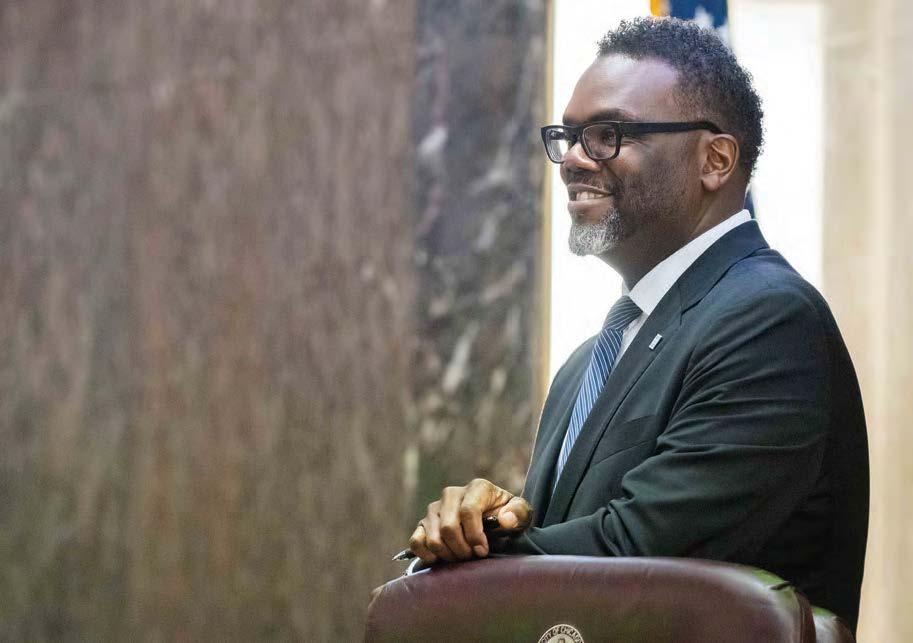
Although the city has yet to lay out a cost estimate to fund the Treatment Not Trauma plan, the union representing the city’s public health workers estimated it would cost $51.2 million to fully fund 14 public clinics by 2027. But there is no estimate on how much the 911 response segment would cost.
However, the CARE program, as it stands, costs about $4 million annually.
CDPH funding















As the budget negotiations ramp up this fall, Rodríguez-Sánchez says she intends to iron out the details of the Treatment Not Trauma program and map out its full costs. “ e idea is to all come together to the table to talk about what is needed,” she said.
Allocating the appropriate amount of funding to CDPH will be vital to the success of Treatment Not Trauma, meaning the agency’s annual budget will need to be expanded signi cantly, said Dr. Eric Reinhart, a psychiatry and behavioral science resident at Northwestern Medicine and Treatment Not Trauma advocate, who spoke at last week’s hearing.
Like other health departments across the country, CDPH’s budget has shrunk dramatically over the past couple decades. at changed brie y during the COVID-19 pandemic, when the department’s budget quintupled to $1 billion in 2022, but it’s expected to be cut in half over the next two years as federal COVID-19 grants expire.
“We need big allocations to CDPH from the city corporate budget,” Reinhart said. “We can’t rely on federal grant funds alone. . . . ere is money in this city. It’s a matter of priorities.”
Justin Laurence contributed.
20 | CRAIN’S CHICAGO BUSINESS | JULY 31, 2023 CLASSIFIEDS Advertising Section
place your listing, contact Suzanne Janik at (313) 446-0455 or email sjanik@crain.com .www.chicagobusiness.com/classi eds OUR READERS ARE 125% MORE LIKELY TO INFLUENCE OFFICE SPACE DECISIONS Find your next corporate tenant or leaser. Connect with Suzanne Janik at sjanik@crain.com for more information. CAREER OPPORTUNITY CAREER OPPORTUNITY CAREER OPPORTUNITY CAREER OPPORTUNITY ChicagoBusiness.com/CareerCente r
To
From to p ta lent toto p em pl oyers, Crain’s Career Center is the next step in your hiring process or job search Get started to day CAREER OPPORTUNITY
In Mayor Brandon Johnson’s transition report, published this month, he points to the fact that the Cook County Jail has become the state’s largest mental health care provider, with about a third of its 6,000 inmates having been diagnosed with a mental illness. | JOHN R. BOEHM



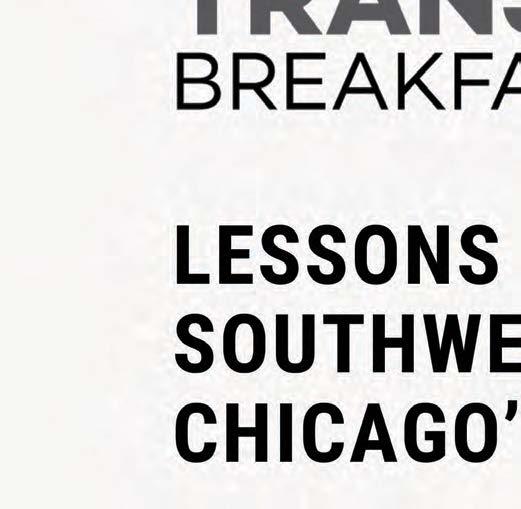
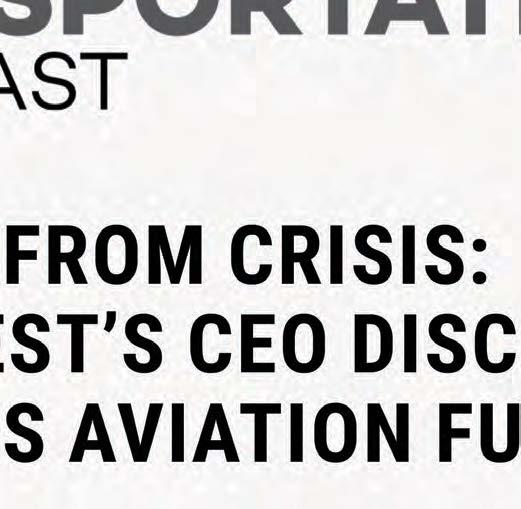

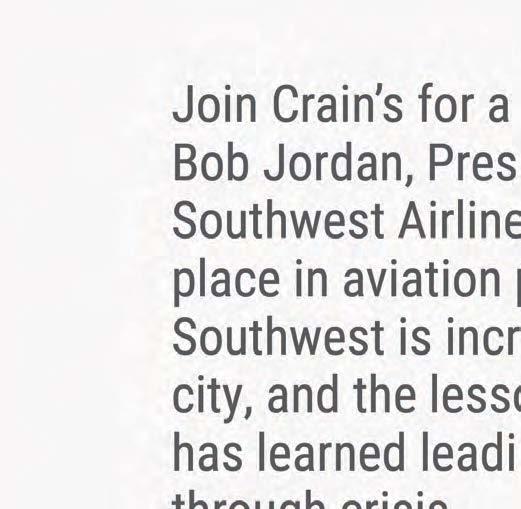
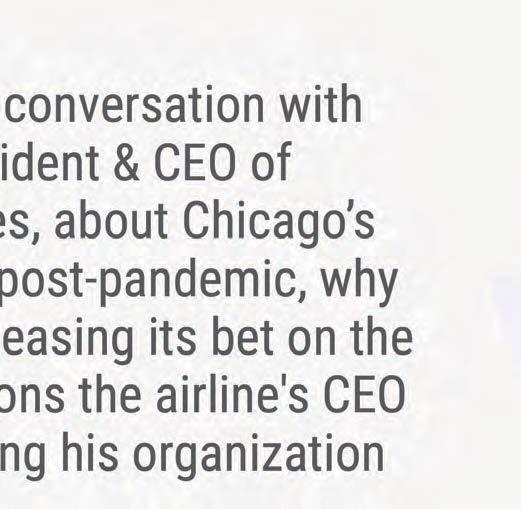




Medline in the $17 billion buyout. ey’ll expect Boyle to position the company for a future transaction that will cash out their investment.
Originally from Tomball, Texas, Boyle is the son of two public school administrators. At 13 years old, he bought a lawn mower and began tending lawns independently. “I had a real business,” he says.
He joined Medline in 1996 as a sales representative in San Antonio, Texas, before moving to headquarters in 2013 as senior vice president of acute care sales. He became an executive vice president in 2018.
With 35,000 employees in more than 125 countries, Medline sells everything from latex gloves to surgical tables. After 56 straight years of growth, the company is the largest by revenue in the medical and surgical products industry, where it competes with the likes of Cardinal Health, McKesson and Owens & Minor for sales to hospitals and doctors’ o ces.
Medline reported $21.2 billion in revenue last year, up 5% from 2021, and Boyle expects revenue to exceed $22 billion in 2023. He declines to disclose pro t gures, but a recent Fitch Ratings report says the company is highly pro table, without giving speci c numbers. Fitch also estimates Medline’s revenue will grow at a compound annual growth rate of 4% to 5% from 2022 to 2025 with adjusted EBITDA margins holding steady at 11% to 12%.
“ ey’ve been doing this for decades and they it do it seemingly well,” says Patrick Finnegan, a senior director and rating analyst at Fitch Ratings. “ at business generates a lot of consistent, robust cash ow.”
GRIFFIN
From Page 3
more condos, the upper oors at No. 9 Walton, that haven’t yet appeared on the market.
e numbers look big to most eyes, but to Gri n, who according to Bloomberg is worth $37 billion, it may look more like a game of penny ante.
rough Zia Ahmed, a spokesperson for Citadel, Gri n declined to comment. Not responding to requests for comment were two listing agents representing Gri n’s condos, Susan Miner of Premier Relocation and Nancy Tassone of Jameson Sotheby’s International Realty.
Gri n is certainly not the only seller with top-dollar downtown condos taking a while to sell. At One Bennett Park, a 65th- oor penthouse has been for sale by the tower’s developer since August 2019 at just under $15.2 million.
Agents who work the upper end of the downtown condo market say Gri n’s decision to put a passel of upper-end condos on the market sent a clear message to his fellow people of means, whether intentionally or not.
“It gave a signal that he is over
Debt to pay down
In his new role, Boyle will need to generate growth while balancing the demands of Medline’s private-equity owners. A consortium of investors, including Blackstone Group, Carlyle Group and Hellman & Friedman, purchased a majority stake from the Mills family in 2021. Now they hold nine of the 12 board seats and reportedly own 80% of the company.
Mills family members hold the remaining three seats, with former CEO Charlie Mills serving as chairman. Unlike many CEOs, Boyle himself is not a director.
Boyle’s immediate priority should be paying down $17 billion in debt — much of it incurred to nance the buyout — in order to set the stage for cashing out the private-equity owners, Finnegan says.
“ e main challenge going forward is paying down that debt,” Finnegan says. “If ultimately the private-equity rms want to get the value that they’ve invested in this rm . . . you have to pay down debt.”
Chicago and doesn’t have any condence in Chicago,” says Brian Loomis, the Coldwell Banker agent who’s representing a condo in the Palmolive Building priced at $10 million, down from a $12 million asking price in 2021.
Chezi Rafaeli, a Coldwell Banker agent, concurs. “Ken Gri n basically made a statement to the wealthy community in Chicago,” he says. Rafaeli represented both buyer and seller in the $20 million sale in March 2022 of the penthouse at the Trump International Hotel & Tower.
Buyer attitude shift
A hint that Gri n wasn’t entirely gung-ho on the condo market is that he listed nearly every property at less than he paid for it, acknowledging upfront that they were unpro table investments.
By dropping several condos on the market at once, Rafaeli says, “Gri n basically said, ‘I’m done with Chicago. I’ve given so much to Chicago and I’m done.’”
During his tenure here, Gri n gave more than $600 million to the city’s museums, hospitals, universities and lakefront path, among other charitable donations. He also put more than $100 million into
Slowing debt repayment is a “management performance unit plan” that’s been taking the majority of Medline’s free cash ow in the two years since the buyout deal, according to Fitch. at, and the size of the debt obligation, led Fitch to slap a negative outlook on the company’s debt ratings last year. Medline declined to comment on the compensation program.
Boyle acknowledges Medline’s debt but says the company hasn’t cut costs to pay it down. Instead, he says he is focused on expansion. Medline has invested $2 billion in infrastructure since 2018 and plans to invest $300 million this year. Capital has gone to information technology systems, new warehouses and inventory expansion, Boyle says.
Growth plans also include small acquisitions, Boyle says. In a recent deal, Medline acquired respiratory product assets from Pennsylvania-based medical products company Tele ex in 2021 for $286 million in cash, according to a Tele ex press release.
Now could be an opportune time to focus on growth as the
opposing Illinois Gov. J.B. Pritzker, funding both a Republican candidate who ran against Pritzker and the e ort to stop Pritzker’s proposed graduated state income tax.
After announcing his move to Florida in June 2022, Gri n had reason to believe unloading his condo holdings would go faster than it has. In the rst few months of 2022, two condos had sold for more than any of his asking prices: the Trump penthouse sold for $20 million, and a full oor at No. 9 Walton, immediately below his four-story set at the top of that building, went for $17.4 million. ere was also an $11.25 million condo sale the previous year.
In the time since Gri n listed his condos, Rafaeli says, the attitude of a uent people who could buy them has shifted.
“People don’t feel safe and they don’t know what the new mayor’s policies will do to x it,” he says. “Why would they invest this money when everything is unpredictable now?”
e number of condos Gri n put up for sale didn’t water down the market with excess inventory, however, Loomis says. “ ere’s such a small buyer pool at that level to begin with,” he says. “Putting a couple more condos on doesn’t re-
have to navigate other market challenges, such as consolidation among its customers. Big companies like Walgreens Boots Alliance and CVS Health are buying doctors’ o ces, and hospitals are merging to form large chains. Mergers create larger entities with more bargaining power over suppliers like Medline, and the company could lose customers acquired by rivals that favor competing suppliers.
COVID-19 pandemic ebbs and ination eases.
Medline’s status as the country’s largest medical products supplier made it an important source of masks, gloves and other personal protective equipment during the COVID-19 pandemic. But in the process, demand waned for other Medline o erings, like surgical tools and equipment. Now, with the worst of COVID apparently over, demand for Medline’s other products is recovering, Boyle says.
“What we’re seeing now is a drop-o or normalization of the personal protective equipment but we’re seeing a lift in patient volumes across all ends of care,” Boyle says.
Market challenges
During the peak of in ation, which drove up costs for most companies, Medline maintained strong pro t margins with modest price increases, Boyle says. But he acknowledges that higher labor costs are likely permanent.
Like most medical products companies, Medline will also
ally depress the inventory.”
e larger problem, he says, is that “these days, everybody seems to want brand-new. ey don’t want to do any work, just move in.” at preference, which agents at all levels of the price ladder have mentioned, may hurt Gri n in two ways, Loomis says.
Some of the billionaire’s o erings are un nished oors at No. 9 Walton, “where you have a lot of work to do before you move in,” he says, and one is a Park Tower condo Gri n bought more than two decades ago. Listing photos show dark oors, dark countertops and dark wood trim, all of which are long out of style.
Here’s a scorecard on Grif n’s Chicago condo portfolio:
At the Park Tower, 800 N. Michigan Ave.
66th oor
Purchased in 2012: $15 million
Listed in July 2022: $13.25 million
Sold in January 2023: $11.2 million
Loss: $3.8 million
67th oor
Purchased in 2000: $6.9 million
Listed in July 2022: $15 million
It has not yet sold.
Over the long term, Medline will have to decide how best to cash out its private-equity investors. While private-equity rms usually look to sell or take a company public within ve to seven years, Medline and its investors won’t comment on their speci c plans. Boyle acknowledges Medline will need to provide the PE rms an opportunity to cash out but says he’s not focused on it at the moment.
“Eventually, do I think (the PE rms) will try to realize some income on their investment? Yes, but I don’t know the time of it, and that’s not something we’re talking about today,” Boyle says.
e most likely cash-out option for Medline appears to be an initial public o ering of stock or a sale to another private-equity consortium, says Harry Kraemer, a professor at Northwestern University’s Kellogg School of Management and a former CEO of Deereld-based Baxter International.
Antitrust regulators likely would object if a rival medical products supplier tried to buy Medline, which would increase consolidation in a highly concentrated industry.

But, ultimately, it won’t be up to Boyle, Kraemer says.
“ e people that are going to decide the next step are the people who own 80% of the company, which is the private-equity rms,” he says.
At the Waldorf Astoria, 11 E. Walton St.
37th floor
Purchased in 2014: $13.3 million
L isted in July 2022: $11.5 million
Sold in October 2022: $10.225 million
Loss: $3.075 million
At No. 9 Walton, 9 W. Walton St. (All purchases were in November 2017)
35th floor
Purchased: $12.5 million
L isted in July 2022: $14 million
The listing for this condominium went inactive several months ago. Cook County records indicate that it has not been sold.
36th floor
Purchased: $12.14 million
Unfinished space
L isted in June 2023: $12 million
37th floor
Purchased: $12.65 million
Unfinished space
Not yet known to be on the market
38th floor
Purchased: $21.17 million
Unfinished space
Not yet known to be on the market
22 | CRAIN’S CHICAGO BUSINESS | JULY 31, 2023
From Page 1
MEDLINE
STEAKHOUSE
with farmers who let their cows get older than most. Established Chicago steakhouses are keying into new trends, too, selling some cuts of steak by the ounce.
“It doesn’t have to be all of those things that we’ve all come to understand about old-school steakhouses,” said Barry Sorkin, managing partner at Smoque Steak, which opened in May. “Our idea was to create a concept that was a lot less formal, a lot less steeped in old-school traditions, that sort of eschews this idea of a culture of excess that I think is very prevalent in the steakhouse world.”
It’s an approach that steakhouse owners hope will persuade customers to visit more often than just on special occasions. So far, it seems to be working. e steakhouses that have opened in recent months report full seats nightly and repeat customers. Diners are splitting steaks and ordering more of the other stu — sides, cocktails, desserts — thereby driving up their bills.
It is a stark reversal of fortunes for a quintessential Chicago institution. As the city emerged from the worst of the pandemic in early 2022, the steakhouse scene appeared bleak. Nearly one-third of the city’s steakhouses had closed since early 2020, having felt COVID’s wrath more acutely than any other type of full-service restaurant. Large groups were not celebrating birthdays at steakhouses, nor had business travelers returned with their corporate credit cards. Steaks did not travel well in the to-go orders that had become so prominent, and in ation was pushing beef prices too high for many customers to stomach.
Chicago lost some of its storied names — such as Ruth’s Chris Steakhouse and the original State Street location of Morton’s e Steakhouse. A steakhouse in the Loop switched concepts and became an Italian restaurant. Others swapped beef menu items with higher-margin pasta dishes. ose changes were among the
601W
From Page 3
be overhauled with nearly 30,000 square feet of new tenant amenities, including a 7,300-square-foot outdoor terrace, a gym, a tenant lounge and a conference center. e 110,000-square-foot oor plates could be leased by individual users or split up among several, marketing materials show. Most oors will come with small, private outdoor terrace spaces.
“It’s going to be a signi cant value play (compared) to Fulton Market and the new trophy development buildings (downtown), and give, we think, just as good of a quality environment,” said Je Dowdell, who is teaming with fellow Telos senior vice president Matt Whipple to market the project.
Selling prospective tenants on the location of Canal Station may be the biggest hurdle. Northern
many ways COVID reshaped Chicago’s dining scene.
But much has changed in two years. Consumers are once again ready to splurge on steak, but not blindly. Today’s customer wants to know how the steak was cooked and where the beef came from. Rarely are they scar ng down dinner before catching a show or hitting the club. ey want to order appetizers and cocktails before the meal, then linger over dessert.
“People are comfortable pushing their chair back, enjoying conversations and being amongst friends in an environment that is safe and soothing to them,” said Doug Psaltis, chef and owner at Asador Bastian, which opened in March.
Spending money
Even though menu prices generally are higher than they were pre-pandemic and in ation is still front of mind for many consumers, diners are not afraid to indulge in a drawn-out and pricey meal.
Smoque Steak has a $19 steak on its menu. Sorkin said he expected that 8-ounce cut to be the restaurant’s best seller, but “what we’ve been nding is exactly the opposite,” he said. Smoque’s two top-selling menu items are also the most expensive: the $58 ribeye and $52 let.
“ ey are coming to spend money,” he said.
Diners are eating out less frequently to cut spending, but when they do go out, they go big,
Trust employees jokingly referred to the building as “Canalcatraz” for its isolation relative to the Loop.
ough not prohibitively far from Union Station, the walk down Canal Street today includes proceeding under a highway on sidewalks in need of repair.
601W plans to o er tenants a shuttle bus along Canal Street to Union Station and Ogilvie Transportation Center, as well as 375 onsite parking spaces and new streetscapes next to the building. Canal Station also has places to eat and shop close by: e Southgate Market shopping center is immediately south of the building, while a Portillo’s sits across the street.
e building’s view to the east is a deep pool of residential buildings, as well as e 78, a 62-acre planned megaproject from developer Related Midwest.
“You don’t realize how close it is to Roosevelt Collection, and there are options for food out there, but the optics are that it is far removed
said Joe Pawlak, managing principal at market research rm Technomic. Couple that with a low unemployment rate — meaning steady incomes — and a lingering trauma from pandemic restaurant closures, and steakhouses bene t.
People “are saying to themselves, ‘Prices are high everywhere, so why not spend a little more money and get something I really want and go get steak,’” Pawlak said.
Ordering behavior has changed, too. Steakhouse owners report that diners are more frequently splitting a steak amongst the table. Owners say that decision stems from a change in the ethos of steakhouses and how diners use them. Consumers are trying to cut back on beef intake, for their health and for the environment, but they still want to enjoy a sustainably raised and meticulously prepared steak. Everything is smaller: the menu, the restaurant itself and the steaks.
“It isn’t all about the big giant steak anymore,” said Bob Broskey, chef at RPM Steak.

e restaurant, which opened in 2014 and is part of the Lettuce Entertain You Enterprises empire, started selling its Japanese steak by the ounce in 2021, in part to ease potential sticker shock as beef prices skyrocketed. Since then, the River North restaurant has doubled its sales of Japanese beef. “It turned into people just getting what they actually wanted,” Broskey said.
e high cost of beef is still a
from the Loop,” said David Knight, managing principal at Advocate Commercial Real Estate Advisors, which negotiates leases on behalf of tenants; his rm is not involved in the Canal Station project. “Getting tenants that are used to being in the Loop to explore that location will be their biggest challenge.”
601W has already sold a few of its most important partners on its vision: its lenders. e rm landed $215 million in construction nancing last summer for the project. Little Rock, Ark.-based Bank OZK provided a $147.5 million senior loan, and Lionheart Strategic Management provided $67.6 million through a mezzanine loan, the lenders announced last year. e project also includes preferred equity from Milestone Asset Management.
A 601W venture paid $68 million for the building in January 2020 as Northern Trust was preparing to vacate it, part of a consolidation of the bank’s downtown o ces into a
concern for steakhouse owners, as are in ation and labor costs overall. But they are nding ways to shield themselves against the uctuations. Smoque’s menu prices are more uid, moving with the market; Asador Bastian’s direct relationship with farmers helps it circumvent some of the commodity roller coaster.
At Fioretta, an Italian steakhouse that opened in Fulton Market this spring, parent company DineAmic Hospitality can save money by essentially buying large amounts of beef, said co-owner Luke Stoio . DineAmic serves the same beef ordered from the same company at Lyra, Bar Siena and its other restaurants.
“ e prices are starting to come back down, things are kind of getting a little bit better, but it’s denitely not over yet,” he said.
Steakhouses will need to remain exible and nd ways to di erentiate themselves as those cost issues persist, said Huy Do, research and insights manager at market research rm Datassential.
Constant evolution
e niches that Chicago’s newest steakhouses are entering will likely help. Still upcoming are Nisos Prime, a Fulton Market spot from Parker Hospitality that is getting a second life as a Mediterranean steakhouse later this summer, and Tre Dita, a highly anticipated Italian steakhouse set to open this fall in the St. Regis hotel. “Tre Dita” is Italian for “three ngers,” eliciting the thickness of the Bistecca alla Fiorentina the restaurant is set to serve.
Also of note is Chicago Cut Steakhouse’s expansion, which includes taking over a second oor of its riverfront building, and Sophia Steak, which opened its second North Shore location in Lake Forest last year.
Constant evolution is just the name of the game in the steak world these days.
“Our guests are a living art form,” Psaltis said. “We need to stay attuned to them and we need to evolve as our guests do, which is rapid.”
new one at 333 S. Wabash Ave. 601W has been one of the most active investors in the downtown o ce market over the past decade. In addition to the Old Post O ce, the rm controls ventures that own the Aon Center and the o ce tower at 1 S. Wacker Drive. Another 601W venture owns the Civic Opera Building along Wacker, where the owners were hit in 2021 with a $195 million foreclosure lawsuit that is pending.
Canal Station accounts for a large portion of the new o ce product downtown that is under construction today. Real estate services rm CBRE is tracking ve downtown o ce projects underway totaling almost 1.5 million square feet, just 25% of which has been pre-leased. at is a daunting prospect for landlords, though the amount of space is just half of the square footage under construction a year ago thanks to the recent completion of Salesforce Tower at Wolf Point.
ChicagoBusiness.com
President and CEO KC Crain
Group publisher Jim Kirk, (312) 397-5503 or jkirk@crain.com
Editor Ann Dwyer
Creative director Thomas J. Linden
Director of audience and engagement
Elizabeth Couch
Assistant managing editor/audience engagement
Aly Brumback
Assistant managing editor/enterprise Joe Cahill
Assistant managing editor/digital content creation
Marcus Gilmer
Assistant managing editor/special projects
Ann R. Weiler
Assistant managing editor/news features
Cassandra West
Deputy digital editor Robert Garcia
Associate creative director Karen Freese Zane
Digital design editor Jason McGregor
Art directors
Kayla Byler, Carolyn McClain, Joanna Metzger
Senior digital news designer Stephanie Swearngin
Copy chief Scott Williams
Copy editors
Todd Behme, Beth Jachman, Tanya Meyer
Political columnist Greg Hinz
Notables coordinator Ashley Maahs Newsroom (312) 649-5200 or editor@chicagobusiness.com
SENIOR REPORTERS
Steve Daniels, Alby Gallun, Ally Marotti, John Pletz, Dennis Rodkin
REPORTERS
Katherine Davis, Brandon Dupré, Danny Ecker, Leigh Giangreco, Jack Grieve, Corli Jay, Justin Laurence, Steven R. Strahler
Researcher Sophie H. Rodgers
ADVERTISING
Senior vice president of sales Susan Jacobs
(312) 649-5492 or susan.jacobs@crain.com
Sales director Sarah Chow
(312) 280-3172 or schow@crain.com
Events manager/account executive
Christine Rozmanich
Events specialist Kaari Kafer
Account executives

Linda Gamber, Claudia Hippel, Menia Pappas, Bridget Sevcik, Laura Warren
Sales administration manager Brittany Brown
People on the Move manager Debora Stein
Classi ed sales Suzanne Janik, (313) 446-0455 or sjanik@crain.com
Inside sales Isabel Foster
CRAIN’S CONTENT STUDIO
Senior director of Crain’s Content Studio
Kristin Bull, (313) 446-1608 or kbull@crain.com
Crain’s Content Studio manager Jordan Dziura
Custom content coordinator Allison Russotto
PRODUCTION
Vice president, product Kevin Skaggs
Product manager Tim Simpson
Digital designer Christine Balch
Production manager David Adair CUSTOMER SERVICE (887) 812-1590
Reprints (212) 210 0707
Crain’s Chicago Business is published by Crain Communications Inc.
Chairman Keith E. Crain
Vice chairman Mary Kay Crain
President and CEO KC Crain
Senior executive VP Chris Crain
Chief Financial Of cer Robert Recchia
G.D. Crain Jr. Founder (1885-1973)
Mrs. G.D. Crain Jr. Chairman (1911-1996)
Editorial & Business Of ces
130 E. Randolph St., Suite 3200, Chicago, IL 60601 (312) 649-5200
Subscriptions:
JULY 31, 2023 | CRAIN’S CHICAGO BUSINESS | 23
A cut of beef at Asador Bastian
COURTESY OF ASADOR BASTIAN
From Page 1
Vol. 46, No. 30 Crain’s Chicago Business (ISSN 0149-6956) is published weekly, except for the rst week of July and the last week of December, at 130 E. Randolph St., Suite 3200, Chicago, IL 60601-6201. Periodicals postage paid at Chicago, Ill. © Entire contents copyright 2023 by Crain Communications Inc. All rights reserved. Reproduction or use of editorial content in any manner without permission is prohibited.
Premium Pring + Digital $169 a year. For subscription information and delivery concerns please email customerservice@chicagobusiness.com or call 877-812-1590
the U.S. and Canada) or 313-446-0450
other locations).
Send address changes to Crain’s Chicago Business, 1155 Gratiot Ave., Detroit, MI 48207-2732. Four weeks’ notice required for change of address.
(in
(all
Postmaster:
CHILDR EN IS FACI NG HUNGER.
Let
Only a hunger-free community can really be healthy. When we help feed our neighbors, we truly become a greater Chicago.

1 IN 4
’s rise to the
challenge, Chicago.
give now.
chicagosfoodbank.org/rise Please














 By Dennis Rodkin
By Dennis Rodkin




 Danny Ecker
Danny Ecker




































































 Margaret Littman
Margaret Littman
















































